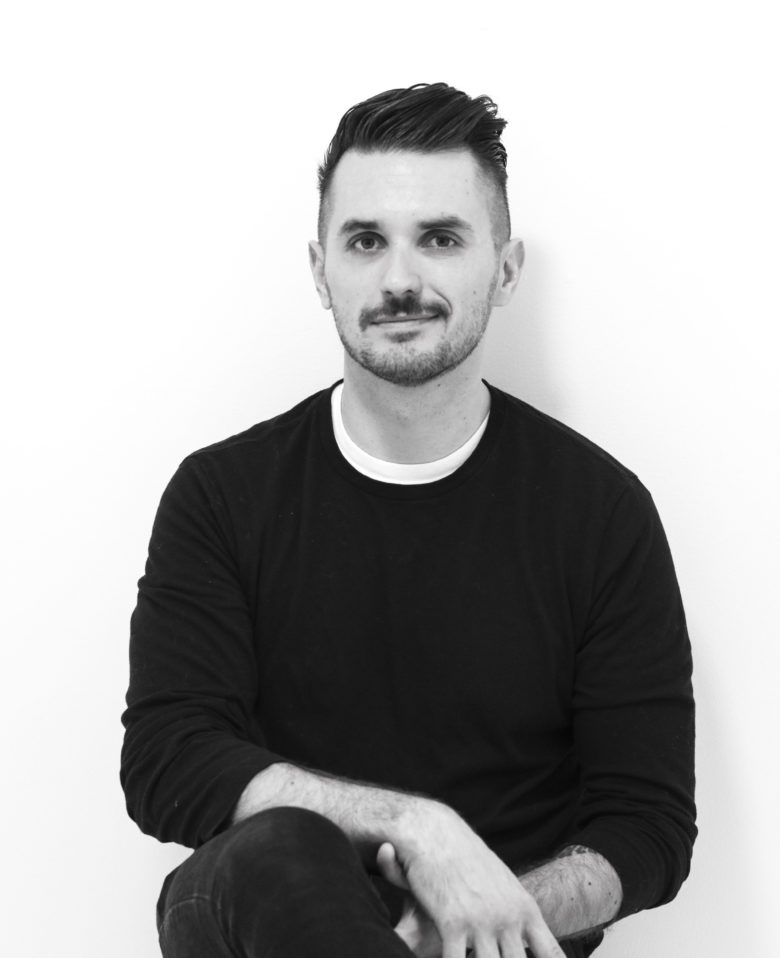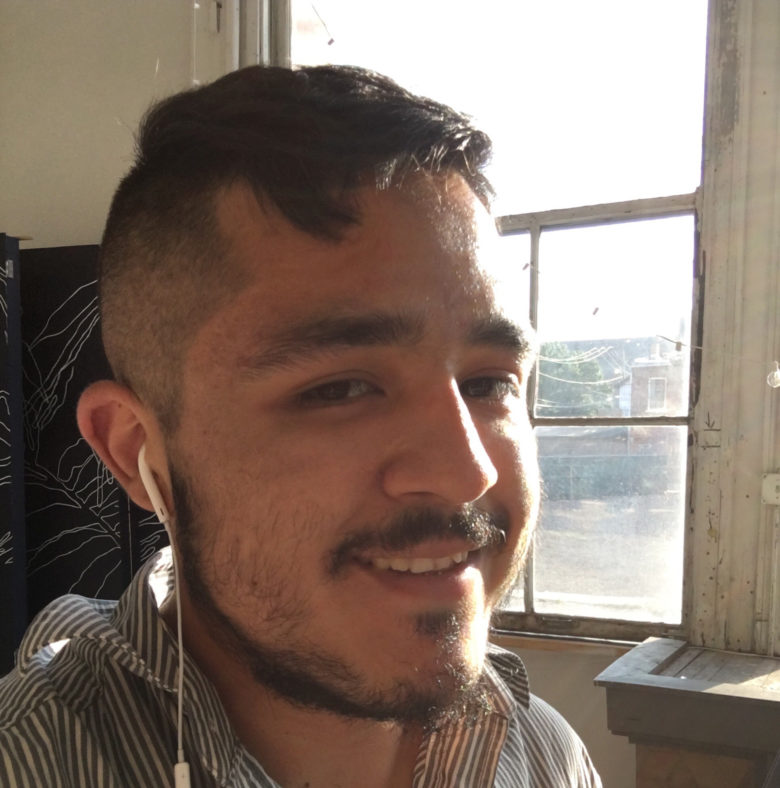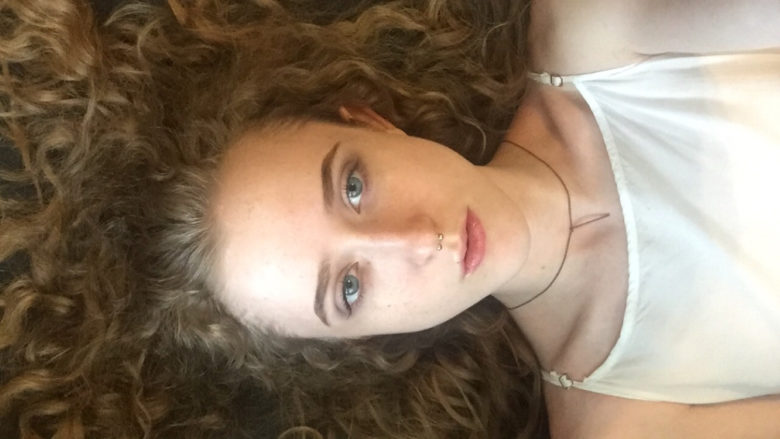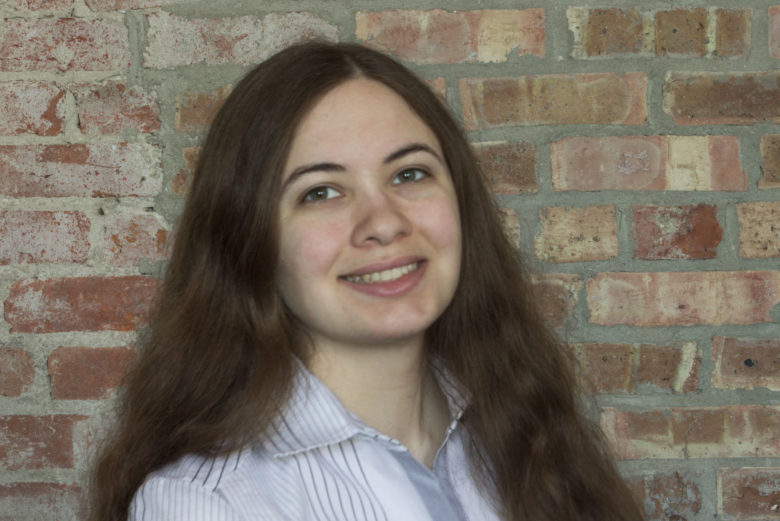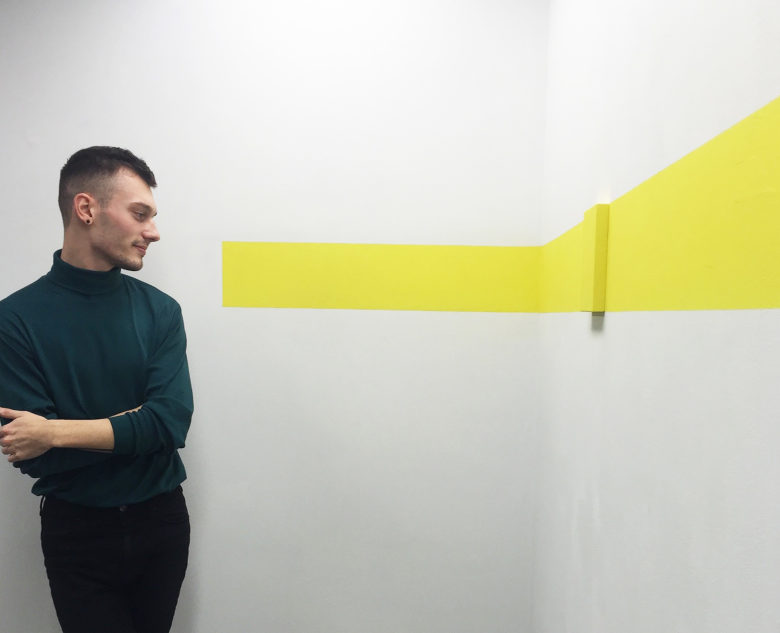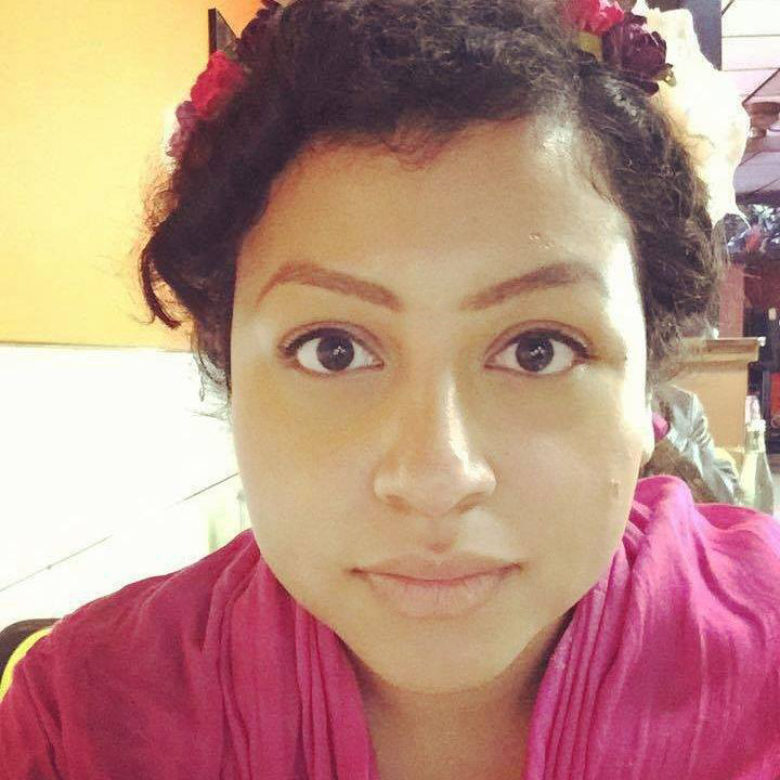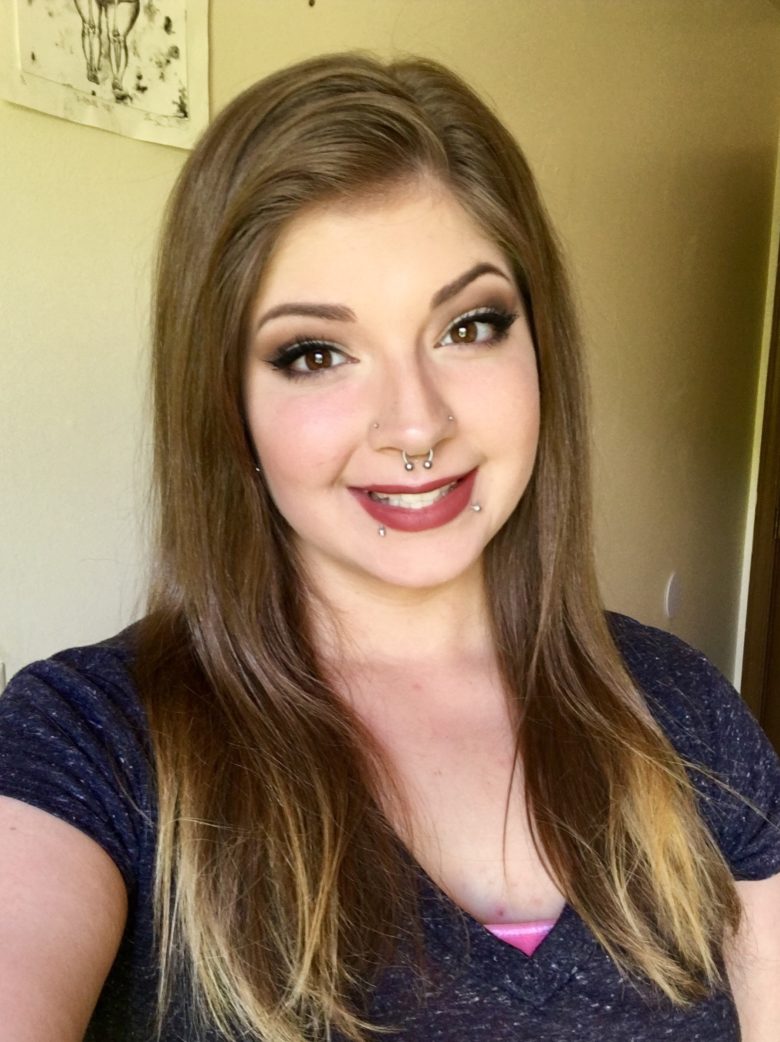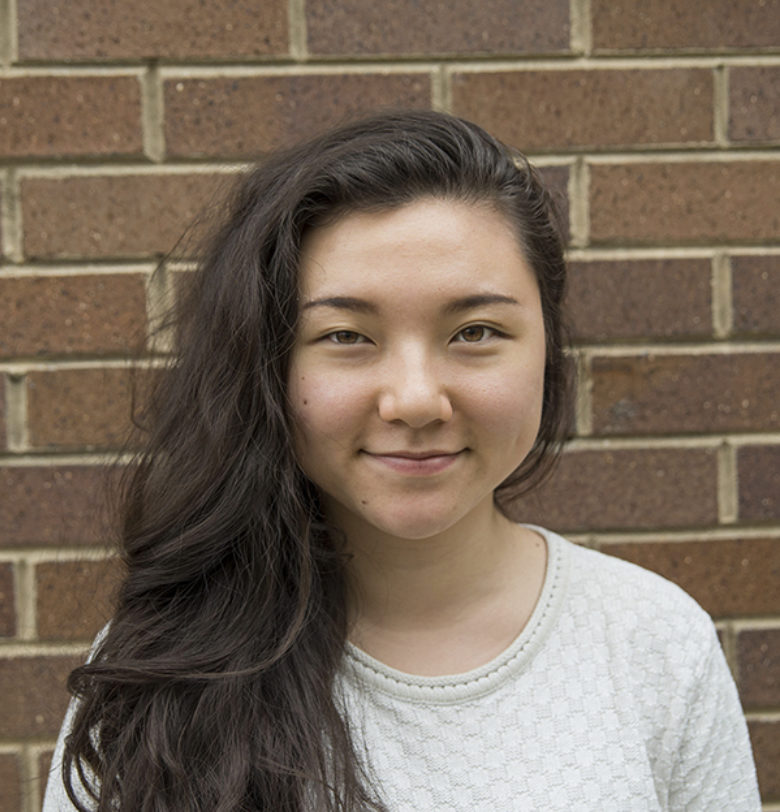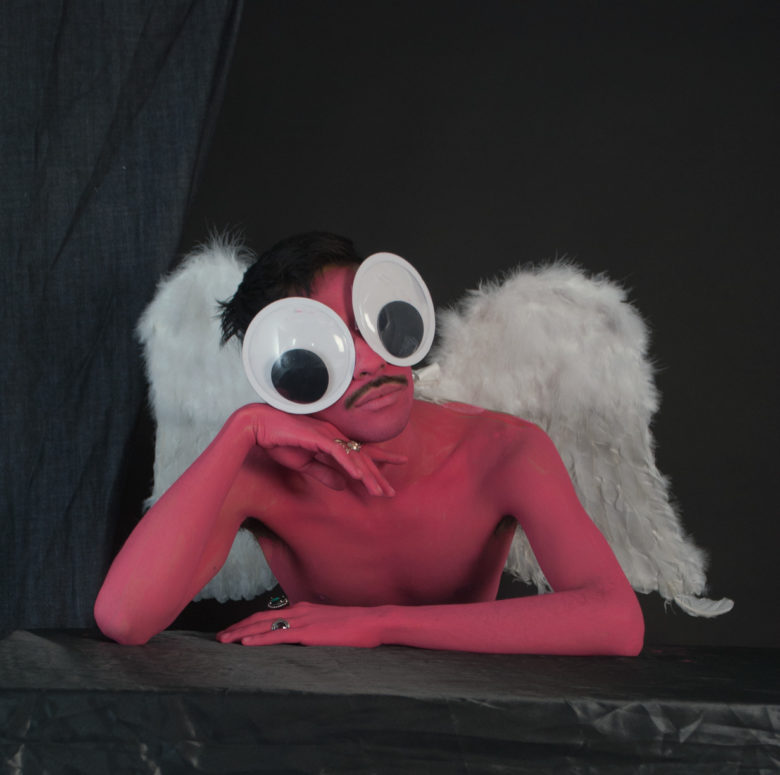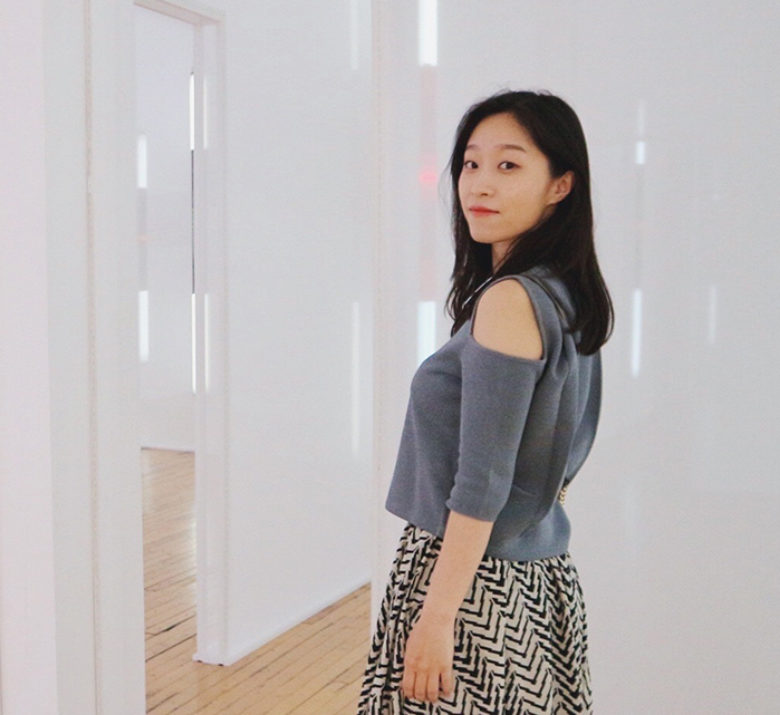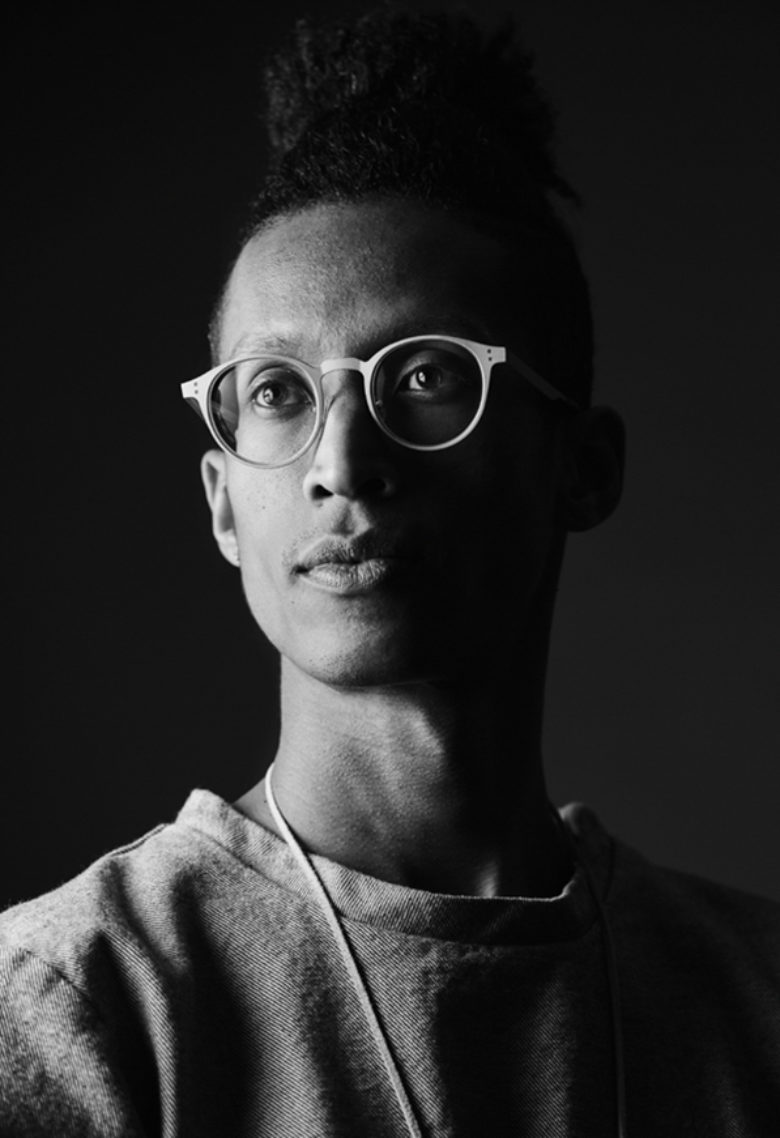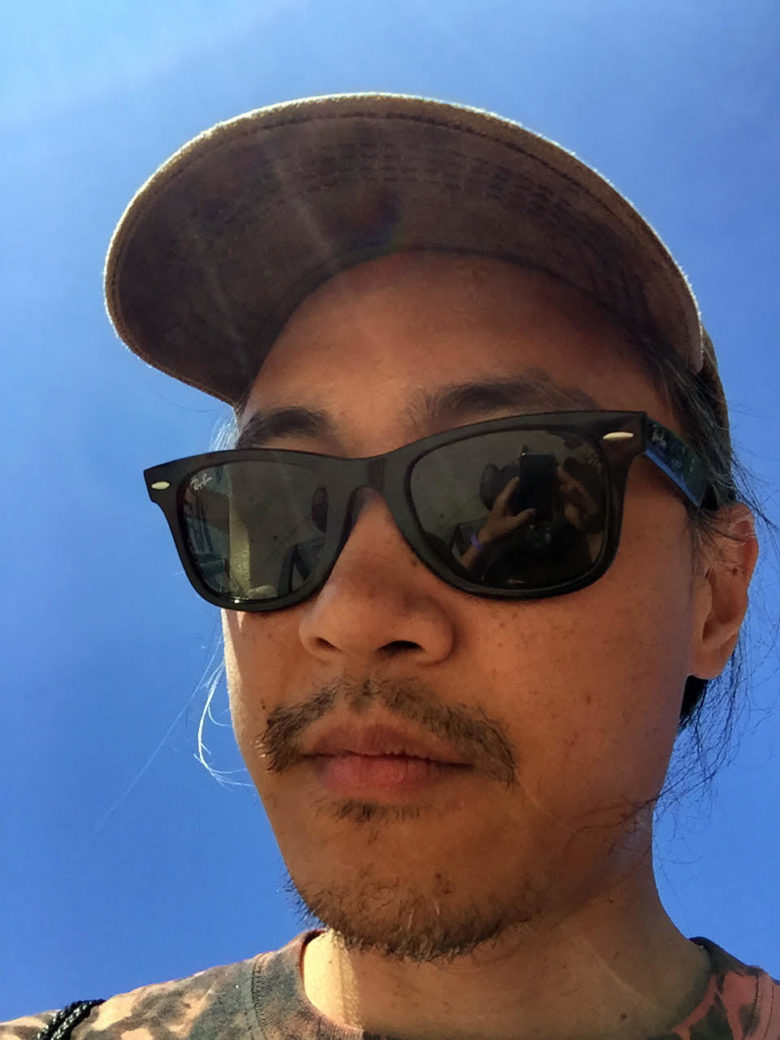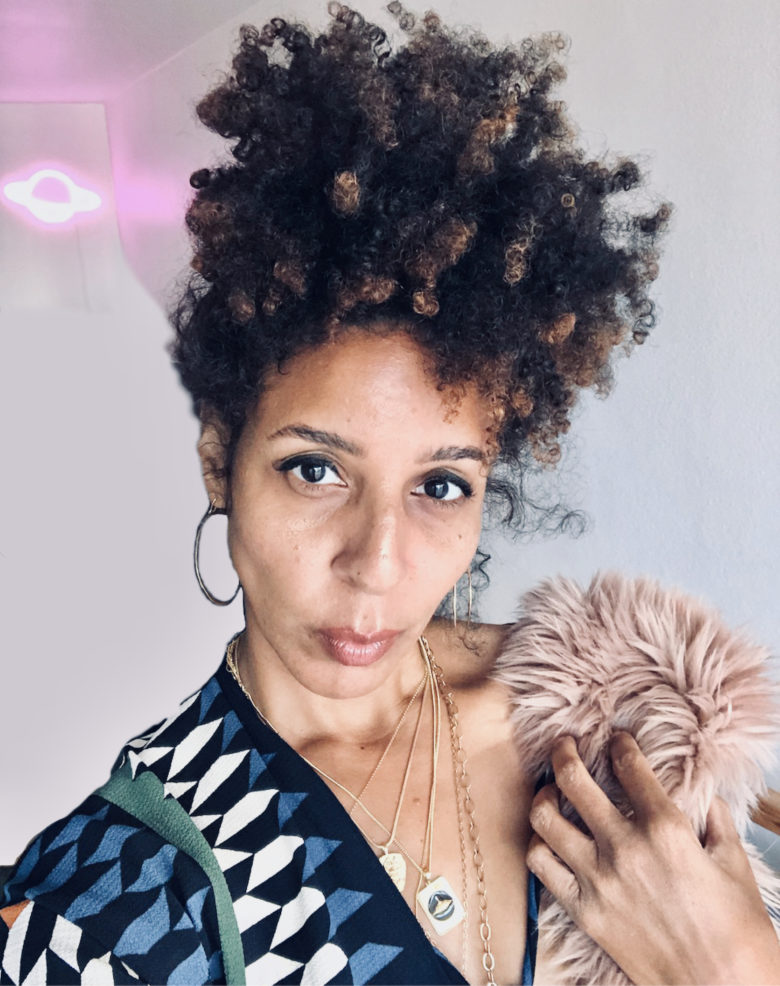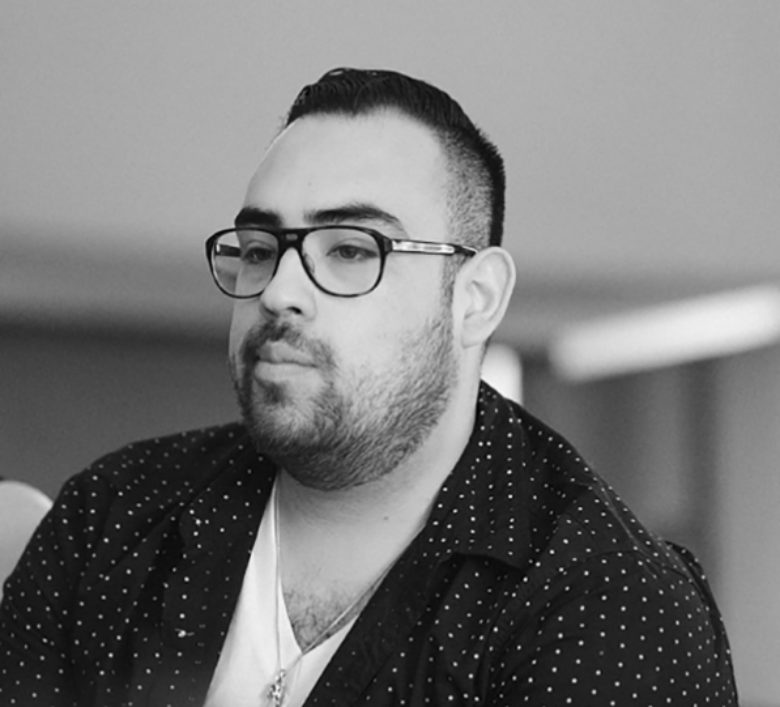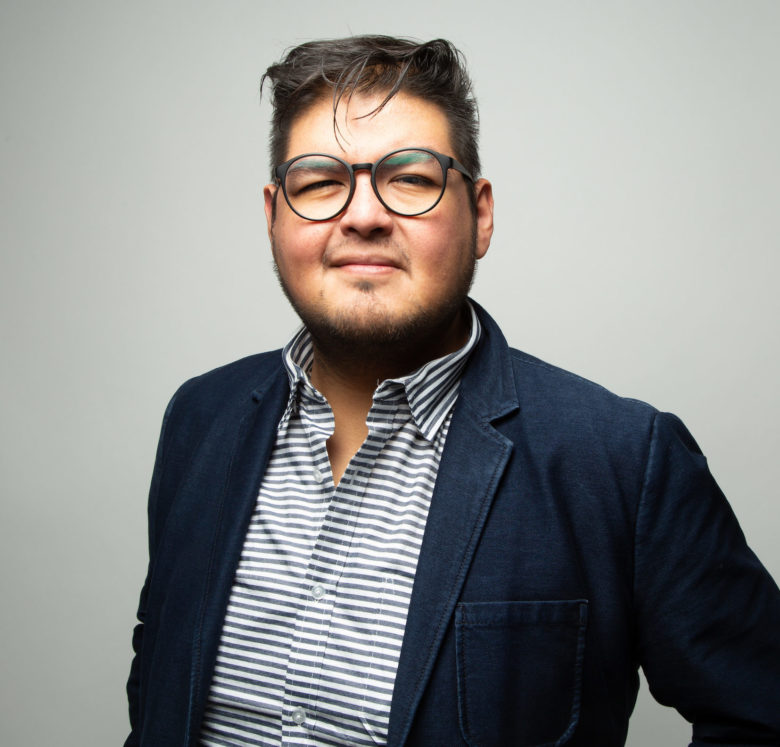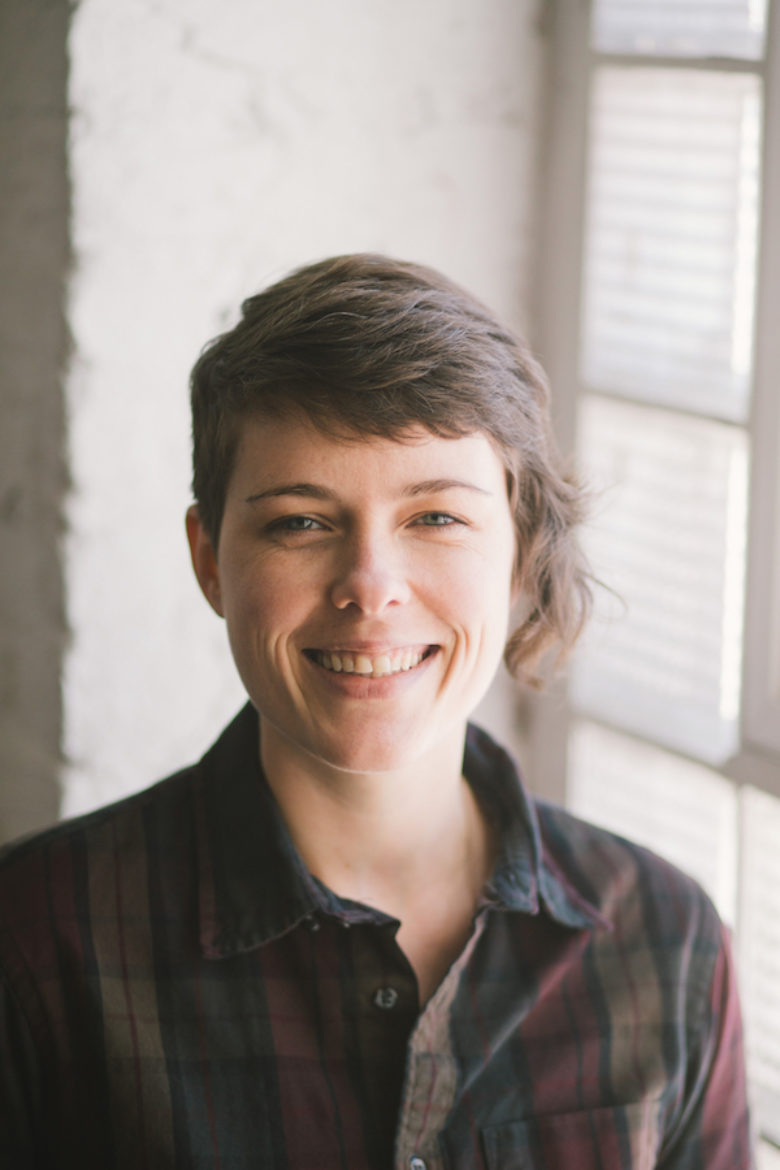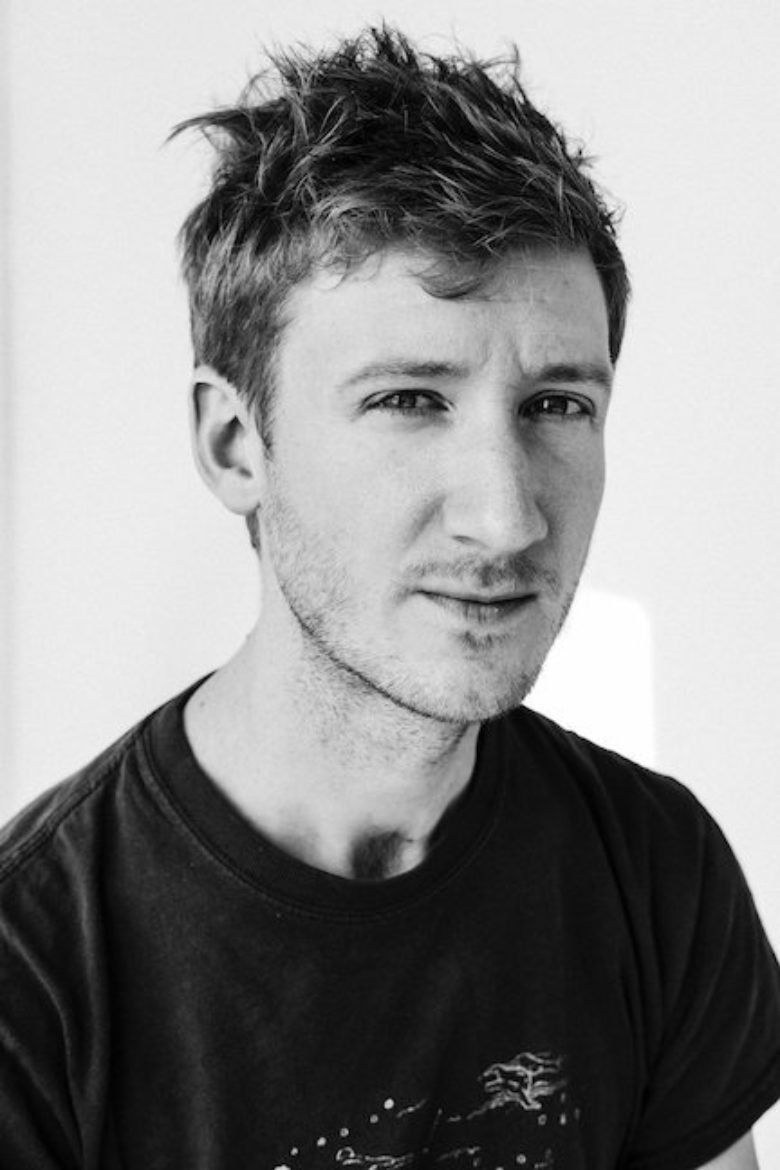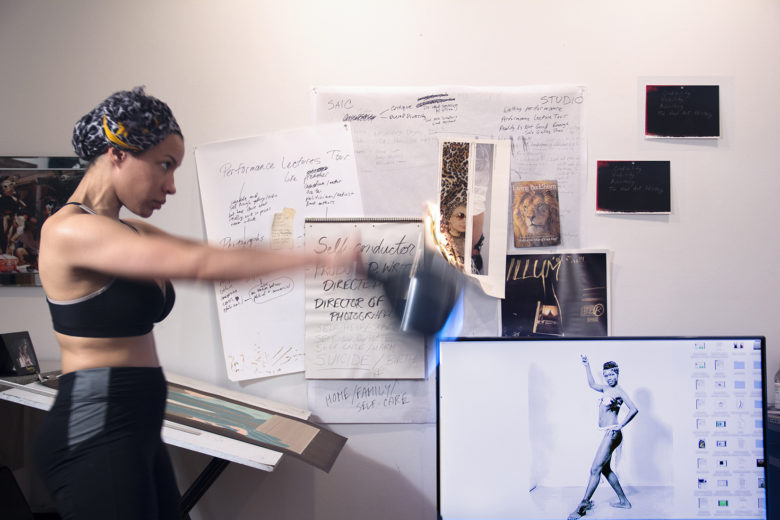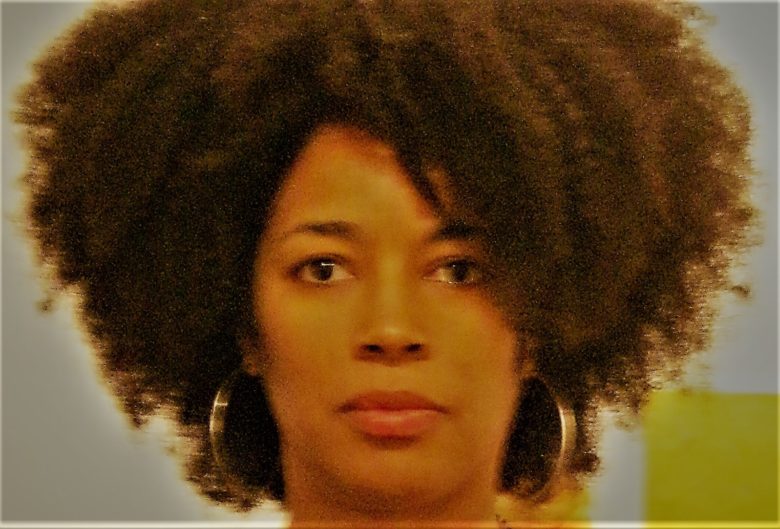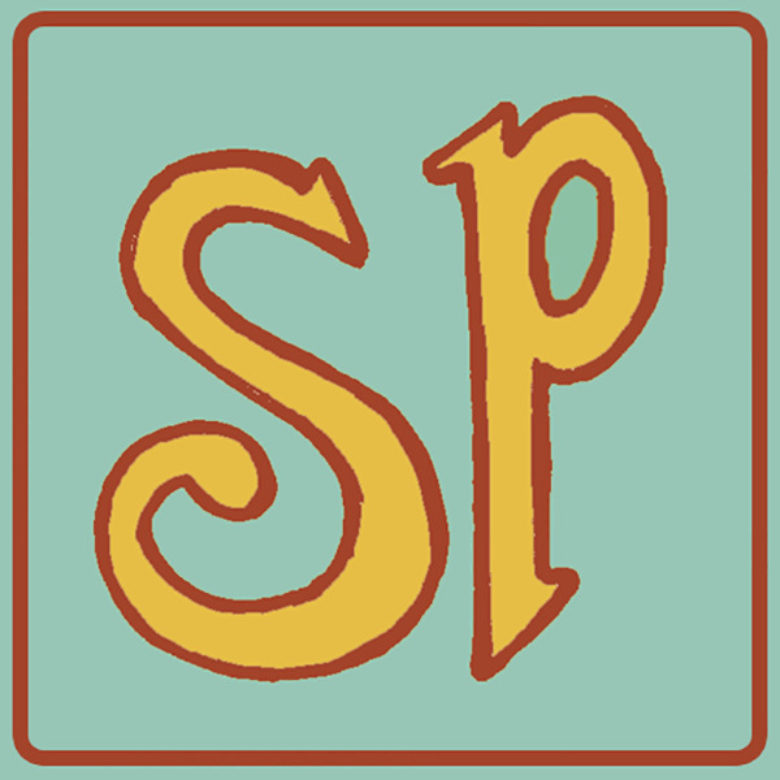Meet Artist Leaders
Jordan Martins is a Chicago based visual artist, curator, and educator. He received his MFA in visual arts from the Universidade Federal da Bahia in Salvador, Brazil in 2007, and is a lecturer at the School of the Art Institute of Chicago and North Park University. He is the executive director of Comfort Station, a multi-disciplinary art space in Chicago. Martins’s visual work is based in collage processes, including painting, photography, video and installation, and he has exhibited nationally and internationally. His work has been featured in exhibitions at The Mission, Evanston Art Center, LVL3, The Franklin, The Museu de Arte da Bahia, Goldfinch, and Experimental Sound Studio. He was a resident in the Chicago Artists Coalition’s HATCH program in 2013. Martins is co-director of the Perto da Lá <> Close to There, a multi-disciplinary project with international artists in Salvador, Brazil and Chicago.
Image: Oxbow 3, 2018, Medium: oil on inkjet printed cotton/linen, Dimensions: 48 x 32 in.
(updated 2019)
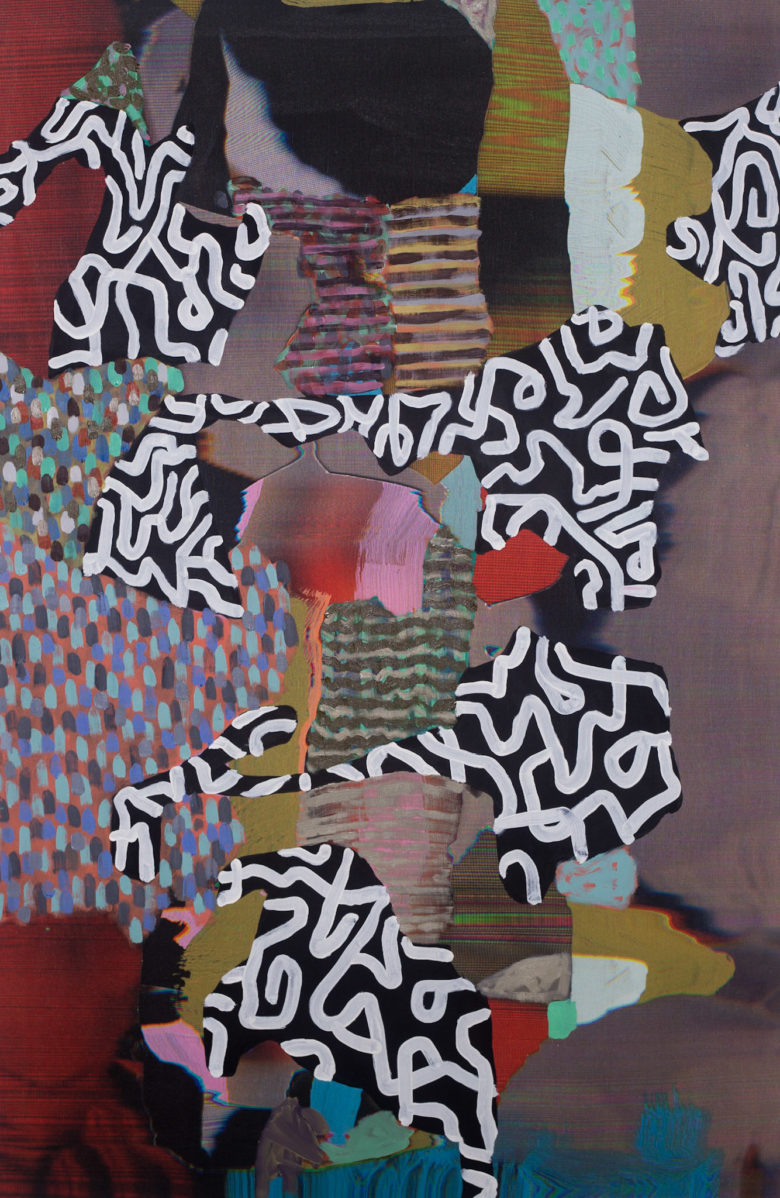
Selina Trepp (Swiss/American b.1973) is an artist whose work explores economy and improvisation. Finding a balance between the intuitive and conceptual is a goal, living a life of adventure is a way, embarrassment is often the result. She works across media, combining performance, installation, painting, and sculpture to create intricate setups that result in photos, drawings, and animations. In addition to the studio-based work, Selina is active in the experimental music scene. In this context she sings and plays the videolah, her midi controlled video synthesizer, to create projected animations in real-time as visual music. She performs with a varying cast of collaborators and as one half of Spectralina, her long-running audiovisual collaboration with Dan Bitney.
Meet Artist Residents
Nominated by University of Illinois - Chicago Personal loss – through death and other tragic means – is paradoxical in that it is both universally shared yet profoundly isolating. Although still young, I have experienced many personal losses over the years. I find myself repeatedly confronting such life disturbances while forever working through painful memories. Among the few things that provide comfort are the photographs and home videos of my family’s past. I am exploring how memories are intrinsically tied to images and objects and how they can idealize memories as well as outlive the memories that they contain. My work engages memories of loss via the visual artifacts of remembrance. By using an alchemical approach to painting and other mediums, I point to the historical presences that surround familiar objects, experiences, and memories. Image: It's Just Something I Can Never Watch, 2017
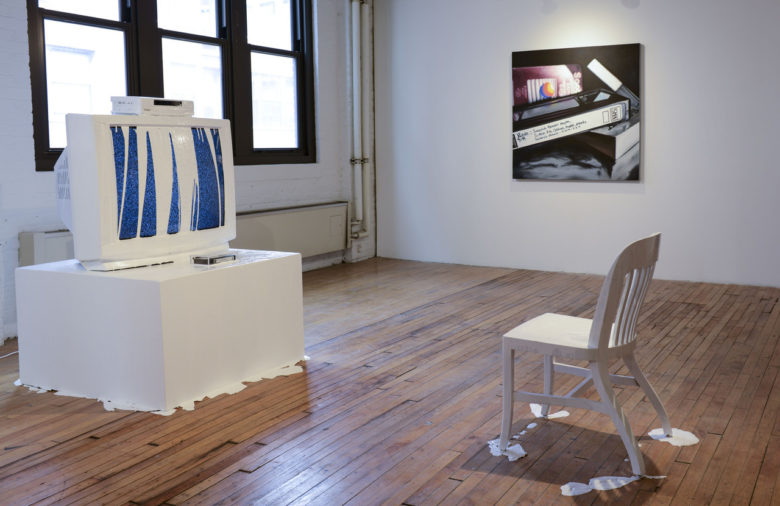
Nominated by Northern Illinois University I am exploring fears and afflictions that bind our psyches. I am interested in how each of us feels out of control in our own lives, my work comes from personal struggles. I create my drawings with attention to detail, while exaggerating reality. In my process I utilize many photographs as reference for my initial idea. In the process of my work, the idea begins to take form portraying psychological anxieties and fears. While I do work with photos, I do not strive to create the appearance of a particular person or a perfect resemblance to the original image. I make it my own to fit the end result of what I am thinking and the implied emotion attached to each drawing. The attention to detail, in my drawings is my own interpretation and reflection of my thoughts and ideas. Essentially these drawings are our anxieties and psychological stresses exposed. These anxieties depicted through my drawings are essentially what makes us human. Image: Untitled, 2017

Carlos Flores (b. 1992 Guadalajara, Mexico) is a multidisciplinary artist and organizer working primarily in sculpture, collaborative installations, and community building. His work is informed by his experience as a queer Latinx immigrant on the West Side of Chicago and brings viewers face-to-face with issues of displacement, class, gender, and race. Currently he is focused on dismantling predatory practices by real estate investors targeting vulnerable populations in Little Village. He is also working on launching a startup that would be both a business and a critical artwork, to take on the growing problem of displacement.
In addition to this work, Carlos is the General Manager at Chicago Art Department (CAD), a nonprofit community art center in Pilsen offering residencies for twenty artists and over a hundred free programs to the community per year. He is committed to cultivating socially minded artists.

Nominated by Columbia College Chicago I consider sites of exchange between the internal self and the external world, through the use of visual metaphor. My own body is cast as performer, and aims to coax non-human objects and substances into their own innate tendency to perform. At-hand materials such as food, ice, or saliva function as non-human bodies which engage in actions such as melting, peeling, bursting or dissolving. By exploring the associations between each substance and its deterioration, I question and draw light upon the erratic, unpredictable natures of subjectivity, the ego, and ontology. These studies often take their final form as an art object, photograph, or moving image in an effort to create lasting artifacts from ephemeral events. Image: Sweet, Cold, 2016
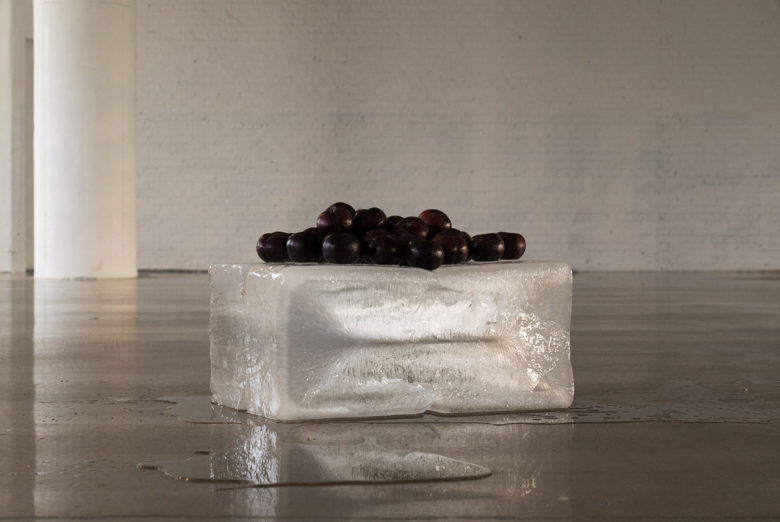
Nominated by DePaul University My work explores the creativity of the subconscious mind. I draw my inspiration from my dreams, daydreams, nightmares, and doodles, as well as other media such as graphic novels, film, and cartoons. The works of artists Masashi Kishimoto, Junji Ito, and René Magritte and films such as A Tale of Two Sisters and Spirited Away inform much of my narrative and compositional techniques in my artwork, which has been described as “cinematic.” Not to mention, growing up with a wide variety of cartoons like Courage the Cowardly Dog, Teen Titans, and Foster’s Home for Imaginary Friends lead to my creation of countless characters and storylines that I would draw over and over again. Even today, I keep a large log of characters that I redesign or simply sketch for inspiration. It is very important to me to reconnect to the creativity of childhood, as my old tendencies inform my modern creative impulses. My fascination with dreams lies in my belief that they reflect a kind of personal truth. I see dreams as a distillation and reinvention of my own experiences or current state of mind. Of course, another person’s dreams will be unique to them with its own inherent connotations and context. I dissect my own dreams often to understand the language that my mind speaks, often noticing recurring themes or tones. While the events and characters range from abstract to literal, I believe that my reactions and feelings regarding the situations reflect who I am and how I perceive the world. My artwork is a vehicle to deliver my personal interpretation of reality. Image: Nightmare Cabin, 2015

Nominated by Northern Illinois University The images that I have been creating is a body of work that focuses mainly on figurative elements. My current pieces explore abstraction: of figure, of color, of line work, and of the human form through the depiction of bruises and cuts. The intentional use of bruises or other flaws, that bring to light our own mortality, are consistently memorable and often brutal. This series specifically focuses on the artistic elements of these brands of flaws, and the beauty and patterns that ripen with them yet are too often overlooked. The patterns utilized in the background are meant not only to create a pleasing aesthetic image for the viewer, but to echo the patterning that comes to bruises over time as they begin to heal and change. Focusing only on certain parts of the body, instead of the whole form, allows me to pay closer attention to the detail of the part being explored. This concentration lets me effectively use my pallet to render the flesh in a way that goes with the theme of frightening, unusual beauty. Not having the whole form visible, or even the eyes in facial forms, brings a universal quality when the viewer is not able to identify the individual. Image: Hold My Hand, 2016
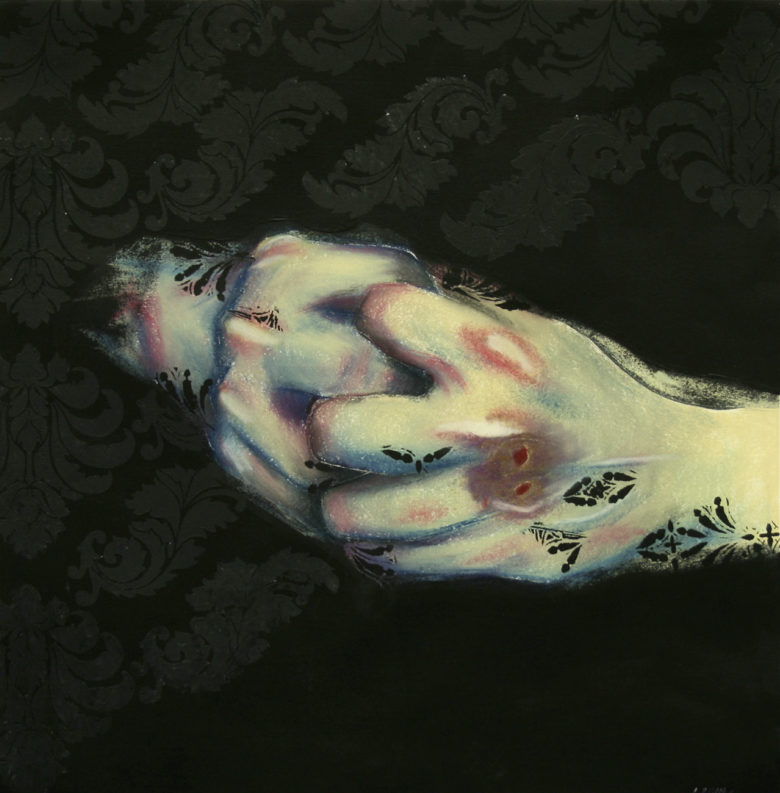

Nominated by Northwestern University The majority of my work from the past couple of years has involved exploring interior spaces and constructed worlds, primarily through video art. The atmospheres of different rooms, spaces, and buildings are fascinating to me, especially when there are no people present inside them. The homes and apartments in our lives are almost like characters in and of themselves, and I like to explore the way our relationships with our homes and workplaces change as we change, and as time and seasons change. I mostly work with video art; both animation and live-motion, and have begun to expand to installation art. Accessibility in art is very important to me, and I enjoy making videos because they’re accessible in that they can be uploaded and watched online, as well as being more approachable for a wider audience (so many people watch movies and cartoons, and I feel this makes them feel equipped to engage with video art). The recent installation pieces that I’ve created revolve around familiar domestic objects, again so that a wider audience can feel able to engage with the art. I like to suggest that something has just happened in the space without actually showing what’s happened. I’m interested in exploring non-linear narratives, and the way we “edit” our memories to fit the linear construct we see in Hollywood films. My latest video piece is titled I’m Next, and involves intercutting between found footage and footage I filmed, as well as bookends that open and close the video. I wanted to step out of my comfort zone of staged domestic pieces for this video. With it, I’m trying to explore the way different times can seem to coexist in one place, and to capture the feeling one has when they remember their nightmare from the night before. Image: The Confession (video still), 2016
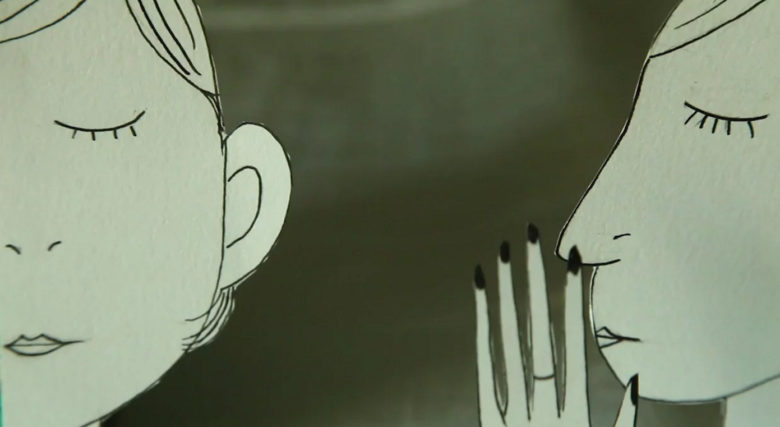
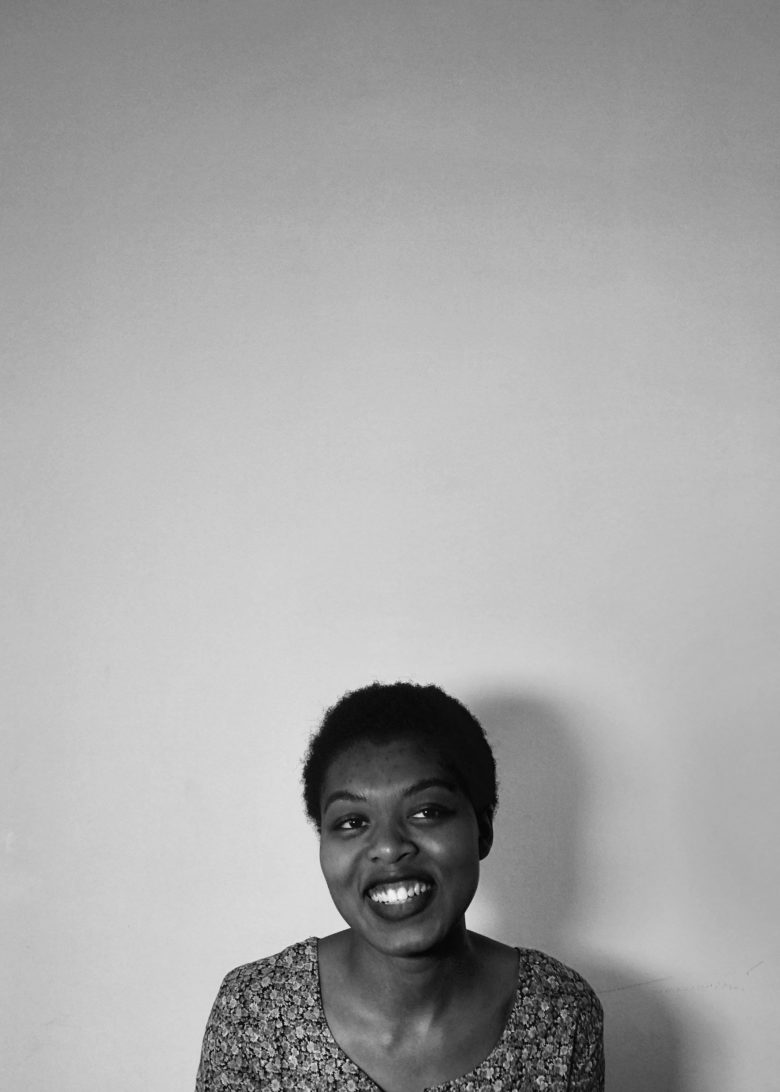
Nominated by North Park University My photography and sculpture play with the idea of mirrors and reflection, while also attempting to pose questions about identity. We live in a culture that seems intent on devouring images with little care for the ethical implications. In this way, we are all “reading the room”, but when that room is full of people we don’t understand, this practice can have dangerous results. Even in the current digital age where accurate information is easy to find, it’s easier to cement our biases and paint fellow human beings as props in our own narratives. If all the world is a stage, what happens when the props begin telling stories of their own? That is one of many “what-ifs” I wrestle with as an artist. As someone who never quite outgrew the fun of playing dress up, I am drawn to dramatic work—like the shadows of Caravaggio and the textures of Velasquez—and draw inspiration from the theatrical. Image: Heterotopia Series - #3, 2016

Nominated by Northwestern University When I started college, I had an identity crisis. I was presented with the opportunity to choose to be someone I had not been before. I chose to be an artist. The modern world has a skewed perception of what art is. But art has been integral to our society since its creation. To make art is to be human. I make art for myself. To remember what I was once, and what I had once. To relive what is now lost. To feel more than what is allowed me to feel. To push something to the extreme, and challenge the dogma of my daily life. To grow as a person, and to remain untethered. When I look at the history of art, I think of all the things that have been said. I know that the only thing I can offer the art world is something that only I can give, myself. My work is personal, introspective, and emotive. I primarily focus on the topic of identity: queerness, sexuality, gender identity, religion, ability. I primarily focus on image makings, from traditional media such as painting, to new media such as digital work, with a special focus on portraiture. If the human body is the framework of society then the human face is its keystone. Most artists hope to create something, hoping it will outlast them and thereby extend them. I am looking to make something that will extend who I am now. Rather than my work outliving me, I hope to outlive my work. To do that I hope to keep changing, to keep experiencing the dawn, to experience the new sun day by day, and to see someone new in a familiar face. Image: What is now lost, 2017
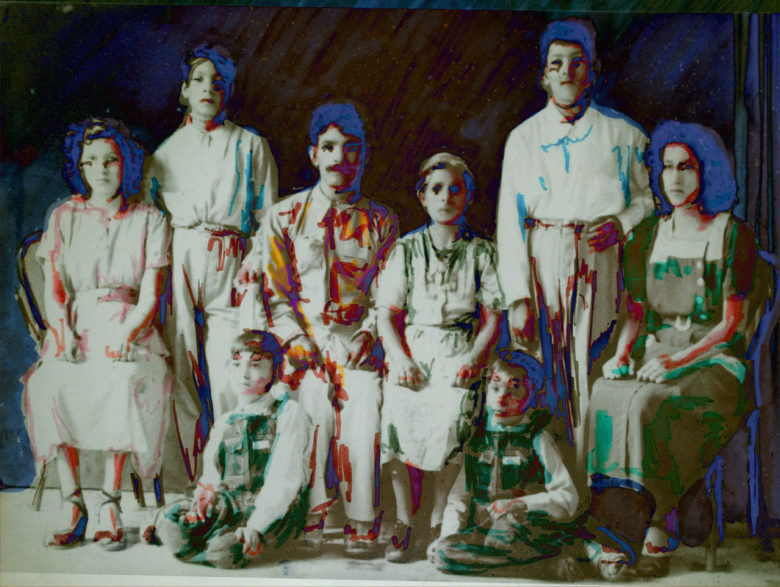
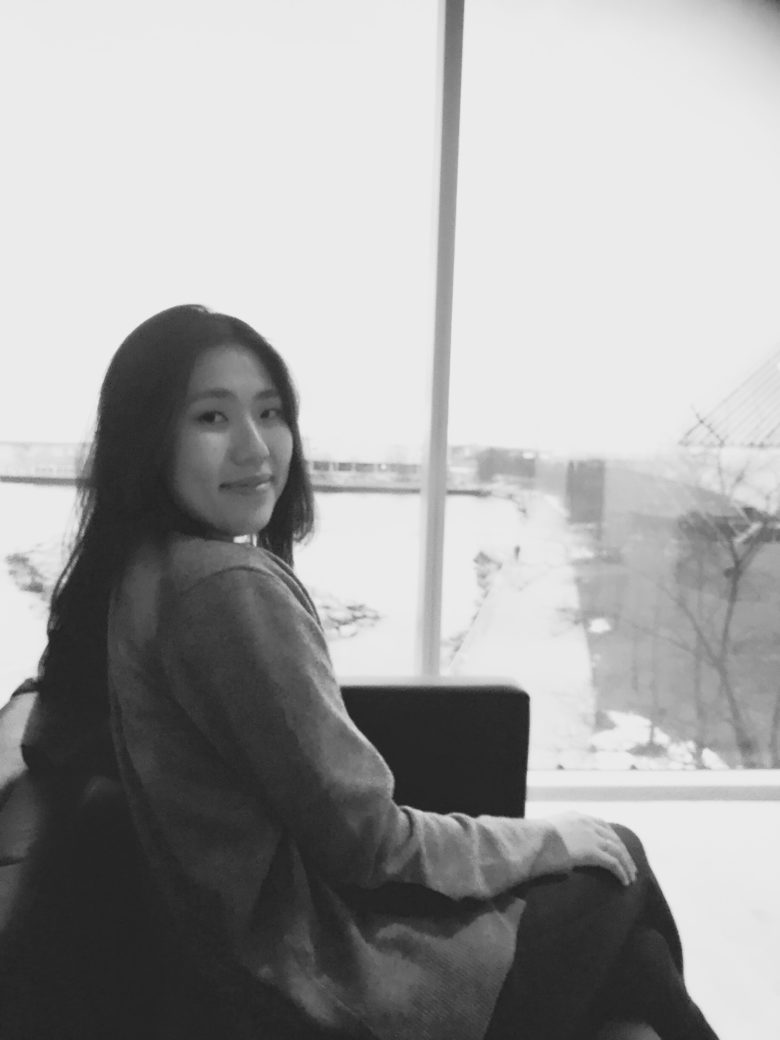
Nominated by the University of Chicago My work is about painting as a medium in relation to digital technology. I investigate painting’s incessant attempts and constant failure to fit into the coded system on which digital technology is built. I see an inherent dichotomy between rigid algorithmic system of digital technology and physicality of painting. Operating on a grid of binary values, digital technology removes anything irrational and unpredictable, and replaces messy and unruly elements of the physical world with a sterile numeric representation. Using grid as a starting point, I juxtapose different formal qualities—frayed, sagging canvas strips and woven grid structure, meticulous rectangular system and dripping paint marks, illusionistic space rendered in paint and digitally projected space onto canvas. Image: Common Miscommunication, 2017
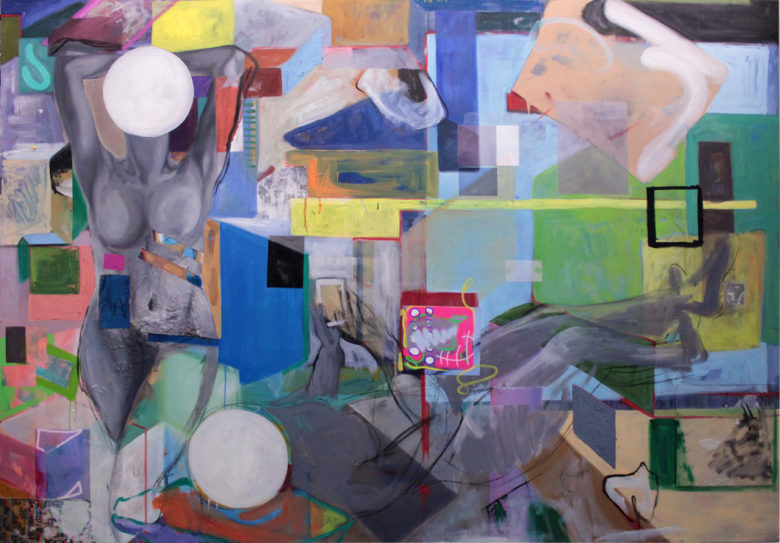
Nominated by Columbia College Chicago My practice explores formalism through site-specific installation and printmaking using minimal forms of line, shape and pattern. With a limited palette inspired by the process colors cyan, magenta, yellow, and black (CMYK), this work presents formal interactions to evoke a phenomenological aesthetic experience. The various combinations of two-color overlays and halftoning allow my installations to provide viewers with individual experiences based on their vantage point. Each in situ work originates from silkscreen prints based on print production’s use of halftone screening. Adhering to assigned screen angles to prevent a moiré (cyan at 15º, magenta at 75º, yellow at 90º, and key black at 45º) halftone lines overlay to create various experiences between the viewer and viewed. From a distance, these large-scale installations appear as a continuous tone; for instance, halftone yellow and cyan lines appear as green from afar. As the viewer becomes more intimate with the work, the optical vibrations from the halftones begin to reveal that more than one color is present. Upon an even closer examination, the viewer notices the formal specifics of the halftones, whether they are ellipses or lines. Once the viewer has identified the separate colors involved in each installation, as they step back again, their vision reverts to thinking one color is present while their experience will tell them two colors exist. This visual contradiction depicts the visual phenomena in which our eyes will see a reality that our mind knows is not true. Image: Tuscan 1590, 2017
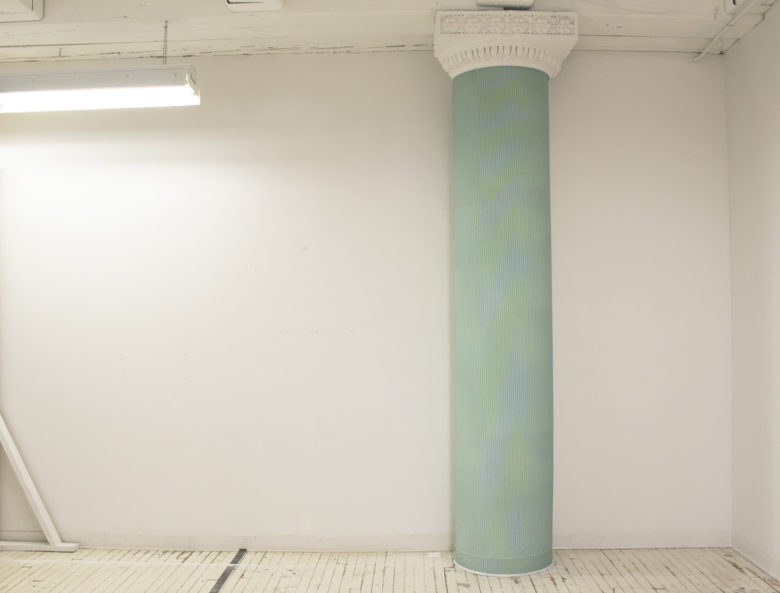
Nominated by Northern Illinois University Over the past few semesters the work I’ve been focusing on has been very experimental. I have been using different techniques and materials in less common ways to create images. I have been experiencing an unexpected artist block and yet I have the urge to keep creating. This has led me in another direction with my work. Some of this creates a mess and some of it has unexpected beauty. The screen prints I have been making use unusual techniques of painting ink onto the screen and semi mixing different colors to create marbled and mixed/ melting textures. The next process is to add more layers and mixtures on top of the first. This creates even more chaos and uncertainty in the pieces outcome. By using these haphazard and undetermined ways of creating images beautiful and unexpected results happen. I have also been experimenting with glitter mono-prints. For this process I set up a sturdy acrylic paper with borders like your typical print and then use different methods of adhering glitter to the surface. I started experimenting with glitter a couple years ago because of its cheap and yet undeniable beauty. I’m fascinated by viewers enjoyment of something so anti-fine art. I have always loved how light reflects off its surface and how you cannot ever fully remove it from a space. I have started to cut into older less successful prints and have found ways to chine-colle’ them to other prints. This is something I hope to explore further as a process in the next couple months. I have often been inspired by the duality of chaos and perfection and I think this is starting out as a great way to explore it further. Image: Glitter Forest, 2016

Nominated by North Park University History is layered like the paint on the canvas over time. I see a connection between the way history is layered over time and the physical layering process that occurs on the surface of a painting. I use the painting process to excavate historical images, events, and people. In my recent work these people come from a specific place – Palestine. In this work based on photographs, I have been referencing photographs appropriated from Before Their Diaspora by Walid Khalidi, a book that visually documents a subsequently devastated Palestinian society. While the main subjects of the paintings are drawn from that record from the past, in tandem with these figures, I have also incorporated representation of my family members (also Palestinian) from the present into the work, both through painting I develop these latter images by rendering from memory and painting from life. Through this process, I merge the living and the lost towards a revitalization of their collective history. Image: Then and Now, 2017

Nominated by DePaul University My mixed media drawings and sculptures starts with a conversation around Blackness and systems of power, with community and myself. I aim to invite the viewer to engage critically with ideas around race, whether that is questioning how are we invested in whiteness, finding more questions, or reaching some sort of understanding through empathy. In my most recent work, a black on black diptych, Because you also survived, I am questioning how mourning and abundance are related in the context of the Black experience. This work questions how Blackness is expansive, yet folks die for existing as Black people. It uses a number of removal, ghost-like and etched-in marks, along with embroidery thread and dirt. Reconfigured Anxious is a series, which centers my experience of mental health as a Black and Queer Femme. It questions where my anxiety comes from and how is it manifested. It also invites the viewer to reflect on how they hold their negative thoughts and where those thoughts stem from. While both works center Blackness, I hope that they pose questions as to where the viewer and I stand in relation to an oppressive system and/or if they are reinforcing the monolith of Blackness. A major theme in my work is looking for how ideas, people and systematic structures are interdependent and interconnected; after recently traveling to Ghana and learning about Ghanaian worldviews of interdependence and interconnectedness, this theme has become more amplified in my work. I am constantly looking for ways as to how art can be a tool to unpack and challenge systemic issues--such as racism, colorism, ableism, fatphobia and transphobia--in intersectional and nuanced ways. I use art as a tool of liberation and healing. Image: Contextualizing Duhumanization: Lynching, 2016
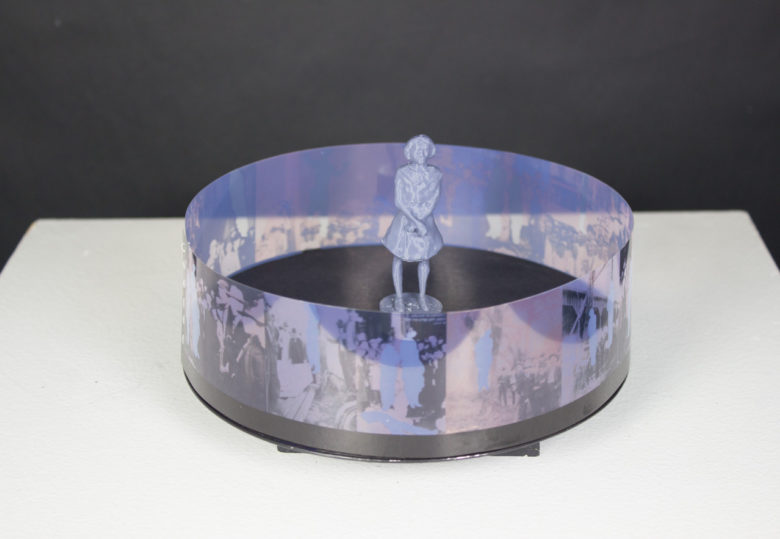

Nominated by Northern Illinois University What does it mean to be fully connected with another human being? For two souls to intertwine until you can't feel anything else but that person's presence. The connections between my twin sister and I have sparked many personal questions and interests such as: the bond of twins, how they relate and feed off one another's energy; I am emphasizing their similarities and differences in order to get a better understanding of how their relationship functions. In the process of analyzing and researching twins, my sister has become the primary muse for my paintings. My body of work consists of large acrylic paintings that are centered on the emotions and parallels between my twin sister and I. In my work, I challenge the concept of having a twin: someone who looks like you and displays almost identical personality, yet still different enough in character to make an unexplainable impact in your life. Growing up, I have aspired to take on qualities that my sister possesses that are not apart of me, and painting her, being able to place myself into her world, or even more, allow her to have a significantly abundant presence in mine, allows me to be like her in ways I feel I am not. Although mostly acrylic, my work has an element of surprise in hints of texture created by mediums other than paint. This is a noteworthy aspect to my paintings because the fact that I do have an identical twin sister is typically not the first thing I tell people. I tend to let the fun fact reveal itself. This is the correlation between my art, creating revelation and being deeply connected to another person, my twin. Different mediums, textures and patterns that help me emphasize my emotions are my “elements of surprise” and the combinations are what allow me to execute my art successfully. Image: Only The Good, 2016

Nominated by Marwen Colación A colación is a flower that grew on the bushes outside of my grandmother’s house in El Salvador. I grew up in a multigenerational home with my mother, aunt and grandmother who made up the matriarchs of our household. In 1980, they immigrated to the United States, along with the rest of my maternal family, in order to escape the civil war in El Salvador. This project represents the immigrants who came to the United States in search of a better life. It is a tribute to Latina womanhood and femininity. Although this is an ode to that, this project is still universal as everyone comes from some sort of family and thus relates. Image: Paz de Abuelito, 2016

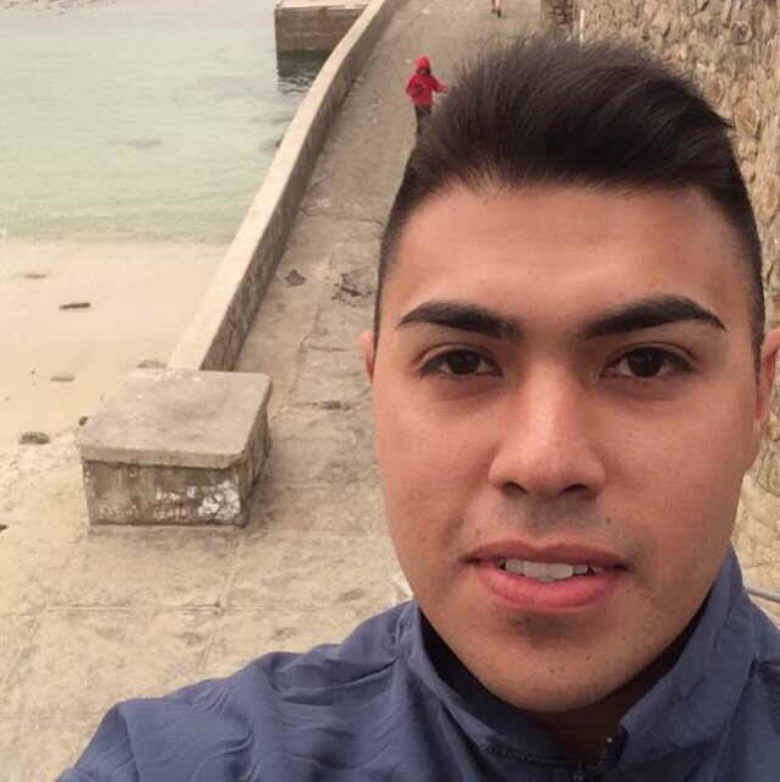
Nominated by Chicago State University The process of design is a method that must leave satisfaction to the designer and the viewer. As a designer,I always try to convey my ideas in the most visual interesting way to create a connection with the viewer but also efficiency to make my composition successful. When I first got involved with art was when taking general courses at a community college. It was back then when my passion for graphic design started to grow, and that feeling of seeing the composition you’ve designed delivering the message of your intending and working as a simple communication tool it’s what keeps me motivated. The visual elements in a composition play an essential role when presenting the piece. The first impression is always the most important thing that people should think when introducing themselves or their businesses. A well-crafted design is always going to be remembered and linked to the company if well presented, and that’s where the work of a graphic designer is appreciated. Image: Santitos, 2015
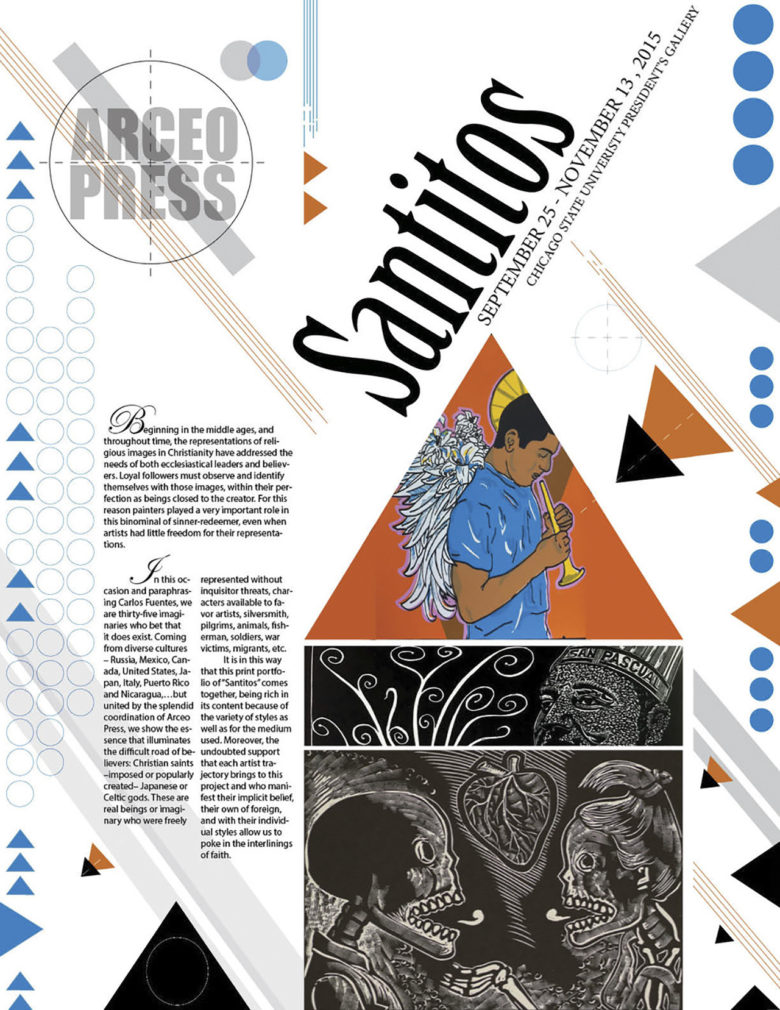
Nominated by Northern Illinois University Many women, including myself, take advantage of cosmetics as a way to further define their outer beauty. My recent body of work explores the element of pain required to meet ideal beauty standards. In researching the cosmetics that I use daily, I was shocked to discover how many ingredients were animal based. My objective is to divert my audience's attention from the discomfort that the man or woman goes through to attain beauty, and draw attention to the animals that suffer through the inhumane processes of ingredient collection and testing. Since many people are unaware of what goes into the products they buy, I hope to guide my viewer's attention to the beings outside of humanity who suffer. Image: Barb City, 2016
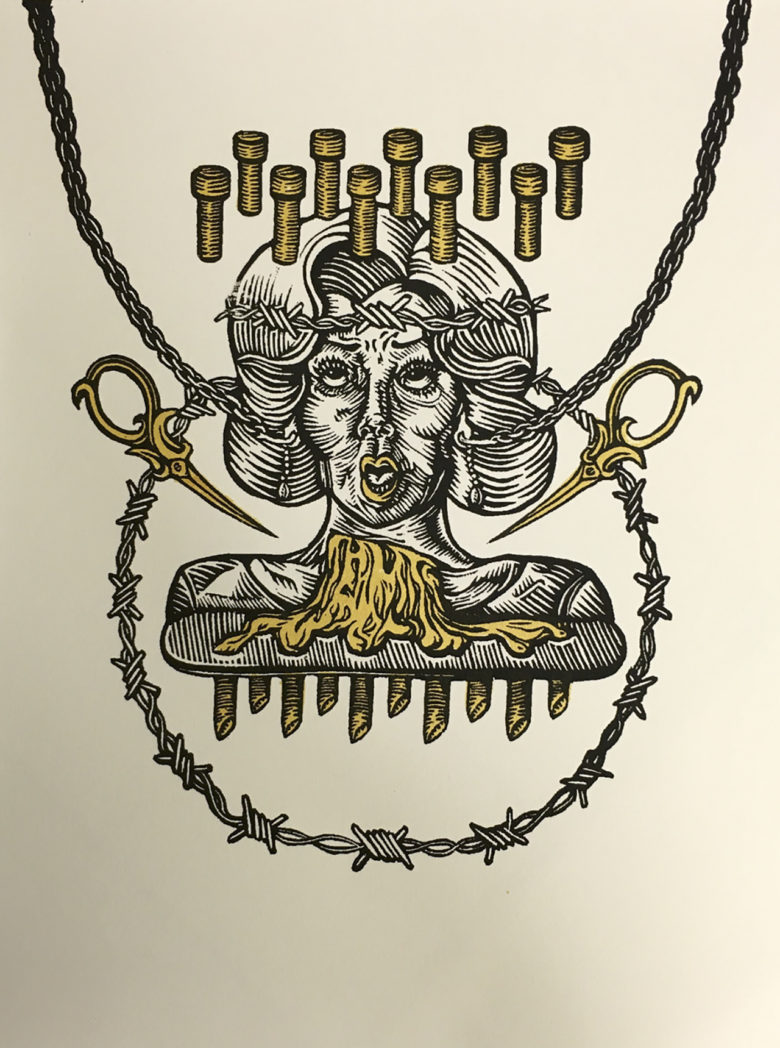
Nominated by School of the Art Institute of Chicago Drawn to the idea of infrastructure as a system, I explore materialism as a use of language in elevating the object’s frame of context. Incorporating the outside world into my practice, I access the infinite possibilities of composition and structure. My focus lies within sculpture and photographs, where the interaction between two-dimensional space and three-dimensional space form a sensory experience and encounter. Interested in the form of display through functionality, I create systems through the use of industrial and natural materials, along with selected objects, often found, to examine the act of producing through procedures. Found remnants of infrastructure are placed in a domestic setting creating a purgatory for the lost objects. In examining the process of selection, I push the boundaries of display through the figurative and literal forces of attraction. I am a hoarder of shells, rocks, and objects. I have always been fascinated by the mechanics of objects; the way in which an object exists in a space and how it contributes to its surrounding. Every human-made object has been created to fit the needs for us. However, I believe in the potentiality of the objects themselves. In utilizing the objects form, I create scenarios in which the objects are given a purpose - a purpose that differs from what they were manufactured to be used for. Image: Similar Opposites, 2016
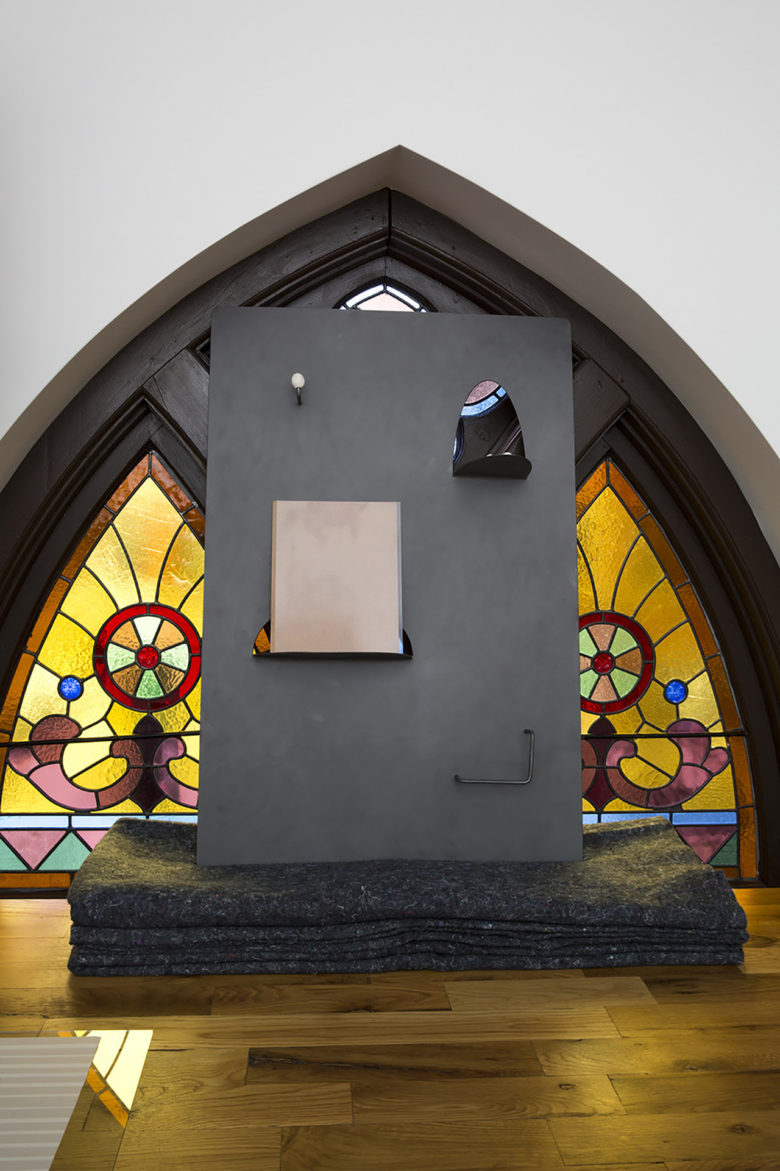
Nominated by DePaul University I grew up in a multiracial family with exposure to diverse cultures and ideas. My family travelled often to visit relatives/friends in other countries, and we regularly hosted refugees, international students, and others in need. I feel this upbringing normalized difference in all aspects of life, forming my focus as an artist: how and why people’s worldviews and perspectives differ, and what informs their identities. Conceptually, I tend draw on lived experiences, especially from my childhood/home. The construction and deconstruction of the whole is a ubiquitous theme in my work, in part because I grew up constantly examining and re-examining my mixed cultural/racial identity. This, combined with having exposure to a range of cultures and worldviews, conditioned me to expect and examine the complexities of all ideas and people I encounter. Aesthetically, my work involves concentrated care in mark-making and detail, and often employs multiples. I work primarily in drawing and printmaking, as those media allow me to control texture, detail, and/or produce multiples. Many pieces are based on representation—either tangentially or explicitly—of imagery related to my identity/upbringing, or examining the individual and the collective. Within this focus, I move between manipulating scale or perspective, at times encouraging the viewer to look closer at how a feeling or idea is conveyed, or, conversely, to consider the construction/deconstruction of a work with many discernable parts. In this way, I want to prompt the viewer to think of how parts inform the whole and vice versa. Image: Working Hands, 2017
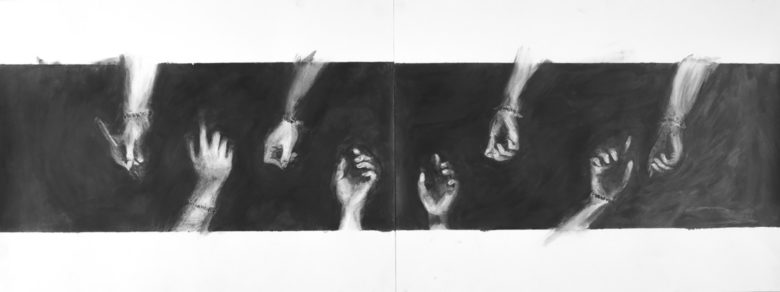
Nominated by the School of the Art Institute of Chicago I use sculpture installation, technology, live plants and social media to draw attention to the unresolved entanglement between technology and ecological crisis. I think art as a creative agency can provide a unique visual outlook that challenges what has been envisioned by progressivism as the landscape of our future relationship with nature. The visual transformation in natural landscape is greatly altered by this age of human domination addressed as the anthropocene era. Human activities accelerated landscape transformation in various ways from urbanization to desertification. The satellite vision and the Internet shift the visuality of the nature landscape from the traditional horizon line to a more blurred out vertical dimension. Plants plays important role in my installations as they have the unique ability to occupy space, grow and thrive on basic needs such as sunlight, air and water; they are vertical life forms as the roots reach down for water and the shoots rise up for sunlight. The poetic parallel between plant life and human activity is what I am most curious in: would new hope emerge between the vulnerability of ecosystem and the resilience of vegetal life? In my speculative systems, all material, objects and living matter is given a chance to inhabited, grow, parasite and decompose, in finding a solution to our collective anxiety embedded in the ecological crisis. Image: Domestaponic: stackable broomstick farm, 2016


Nominated by Chicago State University Life is full of many pleasures, but it is the simple ones that make it more enjoyable. Creating art has become one of my many pleasures. Art has become a luxury in the sense that it requires valuable time. I use that time creating things for my pleasure and for the pleasure of others. These creations are artifacts, stamps of a particular place in time. I share these artifacts through my prints, paintings, customs shoes, and drawings. My intent is to move the heart as the eyes do. I create art with the assumption that rules do not exist, therefor boundaries can be challenged. Time is awarding me with opportunities to meet those boundaries and surpass them. I chose the arts program because creating art has become my sole purpose for living. I currently switched my major from art education to studio because I wanted to concentrate more on my work. Attending college has been the best years of my life. Here, I have been introduced to different types of mediums which will allow me to enhance and expand my artistic abilities. I am focused, driven, and dedicated to my work. I am a painter, who has strayed away from the traditional techniques. I strive for individuality, and a life full of meaning and purpose in which art has gladly opened the door for me to exercise that stance. I took an oath to never set aside my talent, and to be open and adjust to the fluctuating changes that may occur during my journey. The art world is challenging, and ideas are continuously being pushed to every limit. I’m hoping to surpass expectations in every form of art that is introduced to me. I have a particular goal in life, and art has become my golden ticket that will drive me all the way there. Image: Art is a Dying Practice, 2017

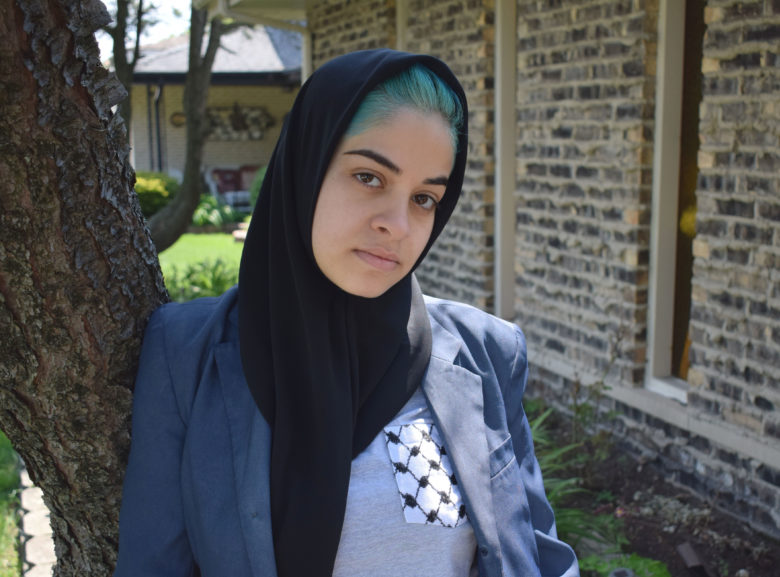
Nominated by the University of Illinois - Chicago Nadine Abdelrahim is a full time artist, dedicated to finding out what that really means. Most of her work deals with the idea of being an individual within a community and the way we – the collective individual, see ourselves as part of something bigger. She uses her own image as a means to connect and reconstruct what it means to be an artist in the 21st century. Through mediums such as sculpture, video, installation and text, Nadine is able to form a narrative that attempts to bridge gaps between seemingly different communities, as well as start unspoken conversations within her own. Image: Ceci n'est pas un hijab, 2017
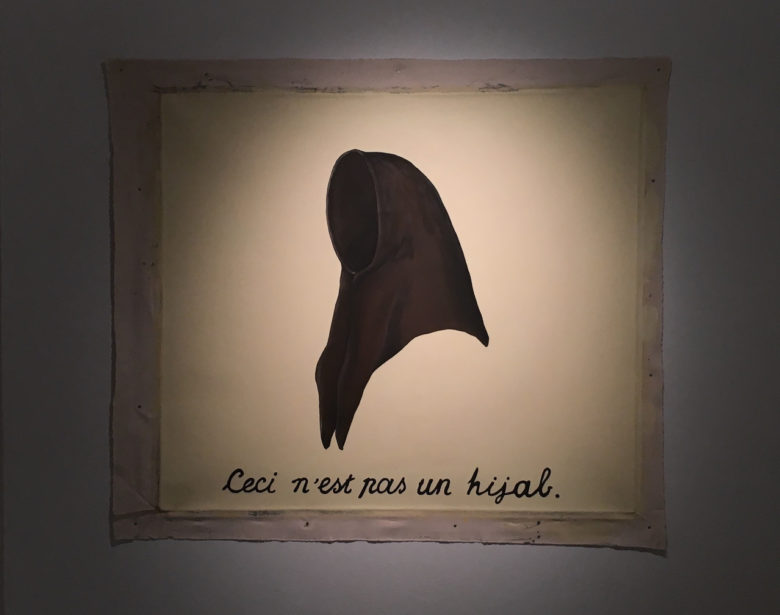
Nominated by the University of Illinois - Chicago My work serves as an exploration of my specific understanding of what it means to exist in our current place in time through painting and performance. My view of the world has and continues to be molded by technology and my upbringing in a world shaped by the Internet. My approach to art making is highly researched based, utilizing texts predating myself and common tools such as Google and Instagram. Each work exists as a mark in a larger conversation that is my practice, rather than isolated commodity objects. By using images and ideas from common language in conversation with facets of history, art and otherwise, I understand my place in the larger conversation that is art history that has led up to this moment. In my performances and paintings, the abstracted body appears in many colors. My use of my own body references common performance practices of feminists in the 70’s. By using my own body as an object, I can elicit the politics and history that are attributed to the male body, and even the genderless body when presented in today’s social understandings. This inherently political process of representing my own body in the public sphere removes it of any art context and thus collapses common understandings of artwork, artist, and viewer. Image: Unsolicited Dick Pic, 2017
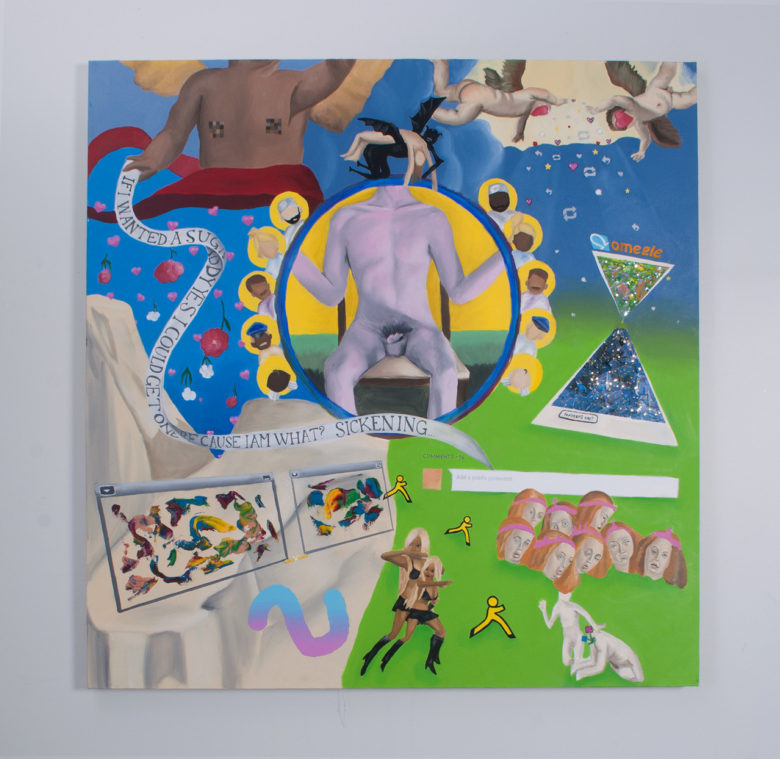
Nominated by the School of the Art Institute of Chicago Seomy Ahn is a multidisciplinary artist primarily working with Fiber. Using the language of sculpture, her works explore the idea of labor and practicality of architectural space and daily products. The artist’s repetitive labor brings in the presence of human remnants. She explores the idea of human occupancy in architectural thresholds, the absence of a body in space, and the reversal of the material or object qualities. The juxtaposition of materials within a space creates a complexity and an uncanniness. Ahn reinterprets the architectural materials as impractical, non-functional beings. The Psychological perception of materials are reversed and distorted in her works. Concrete and plaster is painted on porous surfaces, becoming fragile and delicate. Wood, instead of being a support structure, relies on fabric that stabilizes the structure. Her unpractical objects in space challenge our arrogance and ignorance that rejects the idea of human mortality. Image: Sprawled Out Revolving Door, 2016
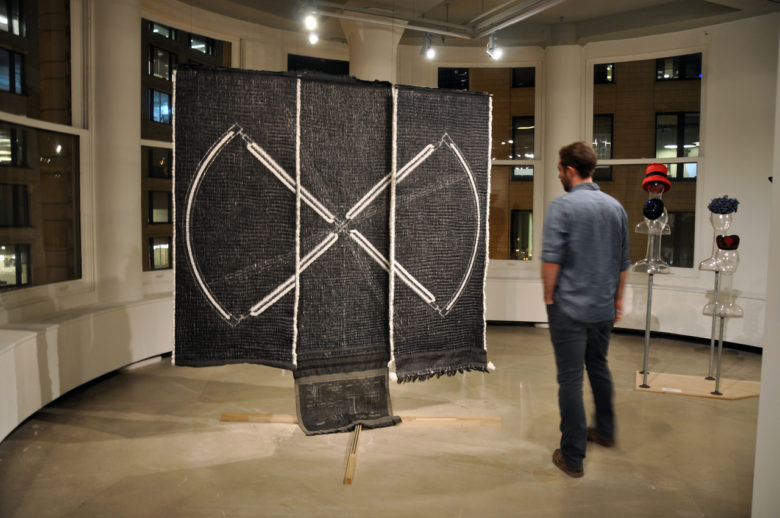
Meet Guest Speakers
Aay Preston-Myint is an artist, printmaker, and educator based in Chicago, USA. Their practice employs both visual and collaborative strategies to investigate memory and kinship, often within the specific context of queer community and history. In addition to their own work in interdisciplinary media, they are a founder of No Coast, an artist partnership that prints and distributes affordable contemporary artwork, serve as a DJ and organizer for Chances Dances, a party that supports and showcases the work of queer artists in Chicago, and are editor-in-chief of an online and print journal called Monsters and Dust. *Photo by Christian Larsen
Brandon Alvendia is a Chicago-based artist, independent curator, and educator. His interdisciplinary practice engages spatial and social architectures by creating platforms for experimentation, discussion and collaboration. He is the founder of multiple Chicago alternative spaces artLedge (2004-2007 w/ Caleb Lyons), BEN RUSSELL (2009-2011 w/Ben Russell), The Storefront (2010-2014), and art-publishing house Silver Galleon Press (2008-present). Brandon attended The School of the Art Institute of Chicago (BFA ‘03) and the University of Illinois at Chicago (MFA ‘07).
Known for his vibrant, abstract compositions, Chad Kouri (b. 1985) examines themes commonly associated with visual literacy - specifically how we see, read, and remember the world around us. He is influenced by minimalism, jazz, conceptual and systematic art, design, and printmaking. His most recent works are meant to prompt introspection and imagination, inspiring a slower pace in our day to day lives as a form of self-care and personal grounding. Kouri is originally from a small town north of Detroit and is a co-founder of the Chicago-based art and design incubator, The Post Family.
Denenge is a space sculptor whose award-winning teaching, art, and writing bridge disciplines of ritual, design, ecology, and Afrofuturity. Her fantastical interactive environments and performances, guided by hybrid archetypal beings through liminal spaces, interrogate, titillate, decolonize, and empower, inspired by Sun Ra and asking: "Who controls the future?" She is Associate Professor, Adjunct, School of the Art Institute of Chicago, and Founder of Denenge Design and In The Luscious Garden, focused on holistic and conceptual approaches to human-centered design.
Her work and writing have been featured at venues internationally including: ICA London for Black Quantum Futurism: Temporal Deprogramming; Corpus Meum at Arts Club of Chicago; Kunsthaus Zürich; Kunstgewerbemuseum Berlin; ARTEXTE; U.S. Library of Congress (NASA/Blumberg); Red Bull Arts NY; Schomburg Center; Art Gallery of Ontario; Museum of Contemporary Art Chicago; Goethe Institut.
She was selected as a 2014 NEH Fellow; 2017 Place Lab Fellow, Rebuild Foundation with U-Chicago Harris School of Public Policy; and 2020 (now 2022) La Becque laureate. Publications and collections include: Peggy Cooper Cafritz Collection; AFRIFUTURI 02022020 monograph; essay on AFRICOBRA co-founder Jae Jarrell, Kavi Gupta Gallery for the 58th Venice Biennale; Antennae: Journal of Art and Nature; Fleeting Monuments for the Black Arts Movement (U-Minn); Vegetal Entwinements (MIT); and Africa Fashion (Victoria & Albert Museum).
Artwork caption: Holographic High Priestess (2020-2022) and High Priestess of the Intergalactic Federation, Special Envoy to Mars (2018, 2019)
Originally commissioned by then-NASA/Blumberg Chair of Astrobiology Dr. Lucianne Walkowicz, for Becoming Interplanetary/Decolonizing Mars Symposium at U.S. Library of Congress, Kluge Center and also performed in 2019 at ICA London as part of Black Quantum Futurism: Temporal Deprogramming, this multi-media audience-interactive poetic riff traverses time, space and altered dimensions. Wearing garments and a headdress inspired by depictions of Califia – the fictional BIPOC warrior queen after whom California is named--Duyst-Akpem considers what it means to be human, to reach for the stars, to become interplanetary.”
During pandemic, the project went virtual, becoming Holographic High Priestess as a video loop projected as an "appearance/apparition" two stories high for Terrain Biennial at Blanc Gallery, Chicago, and as a glitch projection for Tomorrow and Tomorrow and Tomorrow at Chicago Design Museum.
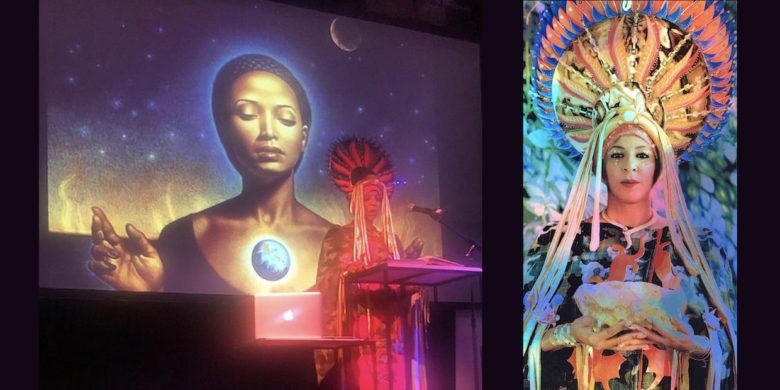
Dana Bassett has been described as a writer, producer, problem solver, logistical coordinator, fundraiser, shapeshifter, talker, listener and a sensitive, yet demanding, soul. Born in Miami Florida the same year Michael Jackson’s Bad was released, Dana currently lives in a converted former funeral home in the Pilsen neighborhood of Chicago. She has worked with up-and-coming organizations such as The Artists’ Cooperative Residency and Exhibitions Project (ACRE), Borscht Film Festival, and Bad at Sports. Her writing has been published in outlets such as Hyperallergic, The Miami Rail and The Seen. Dana formerly served as the Development Director for ACRE (Artists’ Cooperative Residency and Exhibitions), a volunteer-run nonprofit based in Chicago devoted to employing various systems of support for emerging artists.
Edra Soto (b. Puerto Rico) is a Chicago-based interdisciplinary artist, educator, curator, and co-director of the outdoor project space THE FRANKLIN. She is invested in creating and providing visual and educational models propelled by empathy and generosity. Her recent projects are motivated by civic and social actions focus on fostering relationships with a wide range of communities. Recent venues presenting Soto’s work include the Pérez Art Museum Miami (FL), Hunter East Harlem Gallery (NY), UIC Gallery 400 (IL), Bemis Center for Contemporary Art (NE), and the Museum of Contemporary Art of Chicago (IL) amongst others. Soto has attended residency programs at Skowhegan School of Painting and Sculpture (ME), Beta-Local (PR), the Robert Rauschenberg Foundation Residency (FL), Arts/Industry at the Kohler Foundation (WI), Headlands Center for the Arts (CA) and Project Row Houses (TX) amongst others. In 2017 Soto was awarded the Efroymson Contemporary Arts for installation artists. Her co-curation for the exhibition Present Standard at the Chicago Cultural Center was praised with overwhelmingly positive reviews from the Chicago Tribune, Newcity, PBS The Art Assignment and Artforum. Soto was recently featured in Newcity’s annual Art 50 issue Chicago’s Artists’ Artists and at VAM Studio 2017 Influencers. Soto is a lecturer for the Contemporary Practices Department at The School of the Art Institute of Chicago, from where she holds an MFA , and a BFA degree from Escuela de Artes Plastics de Puerto Rico. Edra will be a guest speaker for Artist Case Studies: Business Models on October 16, 2018.
Emanuel Aguilar is a gallerist and independent curator living and working in Chicago, IL. In 2015 he founded PATRON, a contemporary art gallery with a focus on emerging artists and conceptual practice. Previously he was a director at Kavi Gupta Gallery in Chicago and Berlin and a founder of the arts and culture magazine Jettison Quarterly. Aguilar serves on the board of ACRE Residency.
J. Gibran Villalobos is an administrator, curator, and art historian who is an alum of CAC’s HATCH residency. In 2016 he was elected to attend the Advocacy Leadership Institute where he was invited to the White House Office of Public Engagement, the National Endowment for the Arts, and the Congressional Hispanic Caucus to speak to key issues affecting Latinos in Chicago. He served as the 2017 resident curator at the Chicago Cultural Center where he launched an inaugural summit of Latino artists and administrators across the United States. For this project, he received the Act Up Awards from the Chicago Community Trust, and a Propeller Grant. He has held the posts of Cultural Liaison for the Chicago Park District in the department of Culture, Arts, and Nature, and Public Programs and Partnerships Manager for the Chicago Architecture Biennial. He currently serves on the Auxiliary Board for the National Museum of Mexican Art and on the Board of Directors for the Chicago Artists Coalition. In 2019 he was recipient of the “Leaders of Color Fellow” by Americans for the Arts and was also named by the Field Foundation as recipient of the “Leaders for a New Chicago” award. He is currently serving as the co-Chair to the National Association of Latino Arts and Culture nationwide summit for 2020 in which more than 200 Latino artists and administrators will meet and gather in Chicago. He is faculty lecturer at the School of the Art Institute of Chicago in the Department of Arts Administration & Policy and currently works as Assistant Curator in Performance and Public Programs at the Museum of Contemporary Art Chicago.
(updated 2025)
Jefferson Godard is a founder and director of Aspect/Ratio, a video and performance based commercial gallery located in the West Loop neighborhood of Chicago. Aspect/Ratio represents the careers of internationally based artists and the gallery has garnered reviews in such esteemed publications as ARTFORUM, The Chicago Tribune, Modern Painters, Art in America and afterall. Additionally, he also serves as an adjunct professor at Columbia College Chicago in both the Art and Art History and Design departments. As a graduate trained architect, he has worked on several high-rise residential projects in his hometown of Miami, Florida as well as an award-winning urban park competition Bahndeckel located in Munich, Germany.
Jessica Pierotti is an interdisciplinary artist, photographer, and educator with an MFA from the University of Illinois at Chicago and a BFA from the Rochester Institute of Technology. Jessica joined LATITUDE as Deputy Director in May 2016 and transitioned into the position of Executive Director in January 2017. She additionally works as an Instructor in the Photography Department at the School of the Art Institute of Chicago and the University of Illinois at Chicago.
Kate Dumbleton is an Assistant Professor of Arts Administration and Policy at the School of the Art Institute of Chicago (SAIC), where she also leads the Management Studio in its graduate program. She is also the Executive and Artistic Director of the Hyde Park Jazz Festival. Previously, Dumbleton was the Executive Director of the critically acclaimed Chicago Jazz Ensemble. Her work in jazz, improvised music, and performance spans nearly two decades, including music direction for jazz clubs and festivals; curatorial direction of artist residencies; direction of interdisciplinary projects in music, dance, theater, visual art, and film; venue and record label management; administrative direction; and artist management. She owned and operated a successful performance, exhibition space/wine bar in the Bay Area from 2000-06. Her research interests include improvisation studies, black experimental music, and artist driven production networks. Kate's current affiliations include the Advisory Council for the Chicago Artists Resource and ChicagoMusic.org; Programming Committee Member for Made in Chicago Performance Series in Millennium Park; Board of Directors for the Experimental Sound Studio (ESS); Board of Directors for Rova Arts (SF); Artistic Direction Advisory Council, Yerba Buena Garden Festival (SF); Leadership Team for Red Poppy Art House (SF). She has served on numerous local and national grant and prize panel committees. Dumbleton has a B.A. (Cum Laude) in History from Hamilton College, New York and an M.A. in Arts Administration and Policy from the School of the Art Institute of Chicago.
Matt Austin is a book designer and publisher based in Chicago. He started and co-runs Candor Arts, a small art book press that publishes books about life, learning, and healing.
Artist-scholar Rashayla Marie Brown manages an “undisciplinary” studio practice through photography, performance, writing, installation, and video. A lifelong nomad who moved 24 times, she began her practice as a poet in London. An Artadia and Franklin Furnace grantee, RMB has presented work internationally at Tate Modern, London; Krabbesholm Højskole, Copenhagen; Turbine Hall, Johannesburg; and in commissions at Bemis Contemporary, Omaha; Museum of Contemporary Art, Chicago; Museum of the African Diaspora, San Francisco; Rhodes College, Memphis; among others. She holds degrees from Northwestern University, the School of the Art Institute of Chicago, and Yale University.
Rhonda Wheatley is a Chicago-based artist whose sculptures, paintings, and written works are grounded in the speculative and metaphysical and explore consciousness, healing, and transformation. She’s had solo exhibitions at Hyde Park Art Center and David Weinberg Gallery and group shows at spaces including The Franklin, Gallery 400, and Glass Curtain Gallery, as well as Walter Maciel Gallery in Los Angeles and the Black Fine Art Show in New York City. Wheatley teaches art and writing and leads personal development, journaling, and wellness workshops in schools and art spaces in and around Chicago. She also performs readings from her personal journals and other writings, gives tarot card readings (private and as performance), and practices several energy healing modalities. Wheatley earned a BA in English Literature with a minor in African American Studies from Loyola University, Chicago and an MA in Writing from DePaul University. Rhonda will be a guest speaker for Failure Immunity + Building a Sustainble Life in the Arts on January 12, 2019.
Spudnik Press Cooperative is a community-based art center located in a warehouse-turned-arts hub in West Town, Chicago. Unique in our dedication to printmaking and the cultural traditions surrounding print, our studio houses professional facilities and rare equipment for a wide variety of traditional print processes and fine art publishing. Our 4800 sq.ft. studio includes shared work space, private studios and mixed-use spaces for exhibitions, classes and community events. The organization began in 2007 as a live/work studio. Executive Director, Angee Lennard, created the community-integrated print shop to respond to the needs of printmakers and Chicagoans interested in the arts. Throughout our short history, Spudnik Press has seen exponential growth. Programming began with a simple weekly drop-in Open Studio session and now includes a rich network of opportunities for anyone who wishes to be creative through printmaking. Between 2008 and 2011, the organization incorporated, received 501(c)3 status, moved to a dedicated studio space, acquired additional printing presses and hired a Studio Manager. Within four years, Spudnik Press Cooperative was able to offer access to professional letterpress, relief, intaglio, bookbinding, screen printing, and offset printing facilities. Programs expanded through new Open Studio sessions, a local residency program, hosting the first youth field trips and through publishing prints in collaboration with artists and designers. Another studio expansion in 2013 allowed for the creation of the Exhibitions Program, a large-scale free festival, Printers Ball, and adding yet one more type of printmaking to our repertoire, Risography. As Spudnik approaches a decade of programming, the organization continues to provide minimal barriers to well-maintained, robust printmaking facilities and a gallery while establishing a rich community of artists and art-consumers engaged in the vibrant landscape of fine art printmaking.

